MXA’S WEEKEND NEWS ROUND-UP: NEXT YEAR’S RACE SCHEDULES
• WHAT’S ON THE HORIZON FOR THE 2025 RACING SEASON
 The 2025 Indianapolis Supercross will be the 9th race of the 17-round 2025 AMA Supercross Championship on March 8, 2025.
The 2025 Indianapolis Supercross will be the 9th race of the 17-round 2025 AMA Supercross Championship on March 8, 2025.
2025 AMA SUPERCROSS CHAMPIONSHIP
Jan. 11…Anaheim, CA
Jan. 18…San Diego, CA
Jan. 25…Anaheim, CA
Feb. 1…Glendale, AZ
Feb. 8…Tampa, FL
Feb. 15…Detroit, MI
Feb. 22…Arlington, TX
Mar. 1…Daytona Beach, FL
Mar. 8…Indianapolis, IN
Mar. 22…Birmingham, AL
Mar. 29…Seattle, WA
Apr. 5…Foxborough, MA
Apr. 12…Philadelphia, PA
Apr. 19…East Rutherford, NJ
Apr. 26…Pittsburgh, PA
May 3…Denver, CO
May 10…Salt Lake City, UT
2025 AMA NATIONAL MOTOCROSS CHAMPIONSHIP
May 24…Pala, CA
May 31…Hangtown, CA
June 7…Thunder Valley, CO
June 14…Mount Morris, PA
June 28…Southwick, MA
July 5…Red Bud, MI
July 12…Millville, MN
July 19…Washougal, WA
Aug. 9…Crawfordsville, IN
August 16…Unadilla, NY
August 23…Budds Creek, MD
2025 AMA ARENACROSS CHAMPIONSHIP
Nov. 15…Reno, NV
Nov. 16…Reno, NV
Dec. 6…Boise, ID
Dec. 7…Boise, ID
Jan. 3…Loveland, CO
Jan. 4…Loveland, CO
Jan. 24…Guthrie, OK
Jan. 31…Reno, NV
Feb. 1…Reno, NV
Feb. 7…Prescott, AZ
Feb. 8…Prescott, AZ
Feb. 28…Daytona, FL
2025 FIM WORLD MOTOCROSS CHAMPIONSHIP
Mar. 2…Argentina
Mar. 16…Spain #1
Mar. 23…France #1
Apr. 6…Sardinia
April 13…Italy #1
April 21…Switzerland
May 4…Portugal
May 11…Spain #2
May 25…France #2
June 1…Germany
June 8…Latvia
June 22…Great Britain
July 6….Indonesia
July 27…Czech Republic
Aug. 3…Belgium
Aug. 17…Sweden
Aug 24…Holland
Sept. 7…Turkey
Sept. 14…China
Sept. 21….Australia
2025 MOTOCROSS DES NATION
Oct. 5…Crawfordsville, Indiana
2025 BRITISH ARENACROSS TOUR
Jan.4 …Birmingham, UK
Jan.18…London, UK
Jan. 31…Belfast, NIR
Feb.1…Belfast, NIR
Feb. 8…Aberdeen, SCT
Feb. 22…Manchester, UK
April TBA…Middle East
April 26…Abu Dhabi, UAE
2025 AMA NATIONAL AMATEUR CHAMPIONSHIP
Jul. 28-Aug.2…Loretta Lynn, TN
2025 WORLD VET MOTOCROSS CHAMPIONSHIP
Oct. 31—Nov. 1-2…Glen Helen, CA
• START NEXT YEAR’S RACING SEASON ON DECEMBER 28
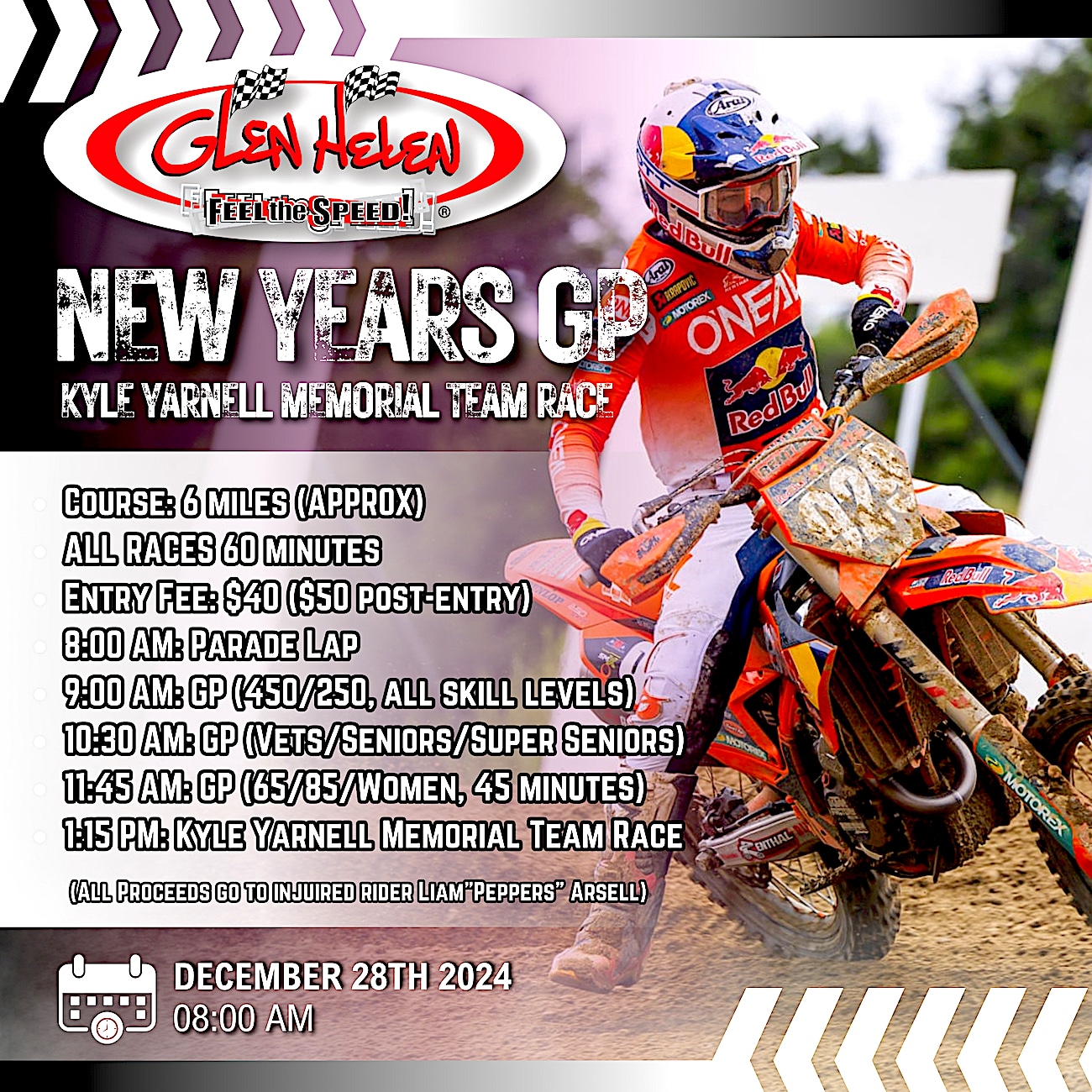 One hour off-road races on a 6-mile course for a $40 entry fee. Practice will be an 8:00 a.m. Parade lap. Plus, at 1:15 there will be a Kyle Yarnell Memorial Team Race. For more information go to www.glen helen.com
One hour off-road races on a 6-mile course for a $40 entry fee. Practice will be an 8:00 a.m. Parade lap. Plus, at 1:15 there will be a Kyle Yarnell Memorial Team Race. For more information go to www.glen helen.com
• JODY’S VERSION OF TRUTH, JUSTICE & THE AMERICAN WAY
 Jody loves the AMA in person—not so much when they are making up their own rules.
Jody loves the AMA in person—not so much when they are making up their own rules.
We can’t always defeat the enemy, often because he is us. That said, it is important that motocross at least make a serious effort to recognize the insidious cultural influences, organizations and policies that, if left unchecked, could radically change the way we do things. Which, by the way, is obviously wrong (but let’s leave that for another day).
The AMA: The greatest threat facing the sport today is the AMA (which paradoxically has the word “American” in its name, but seems incredibly pinko to me). The last organization to hand down rules by fiat, refuse to communicate with the press, punish unfairly, operate by nebulous laws and dress in matching uniforms was formed in a beer hall. Every ten years or so there is a reorganization of the AMA’s mission. Reorganization is a nifty corporate way of saying that the current group of morons did the job wrong, so let’s hand it over to the idiots in the other room. But, let’s not rush to judgment. We need to give every new generation of AMA chiefs an opportunity to mess things up in the name of consistency. Blah, blah, blah. Take my word for it, “The fish stinks from the head.” Okay, don’t take my word for it, take my mother’s word (she’s the one who told me about fish, odor and the concept of permeable rottenness). It isn’t often that you find a major organization so unwilling to admit that it’s wrong—even though it’s standing on a mountain of smelly fish.
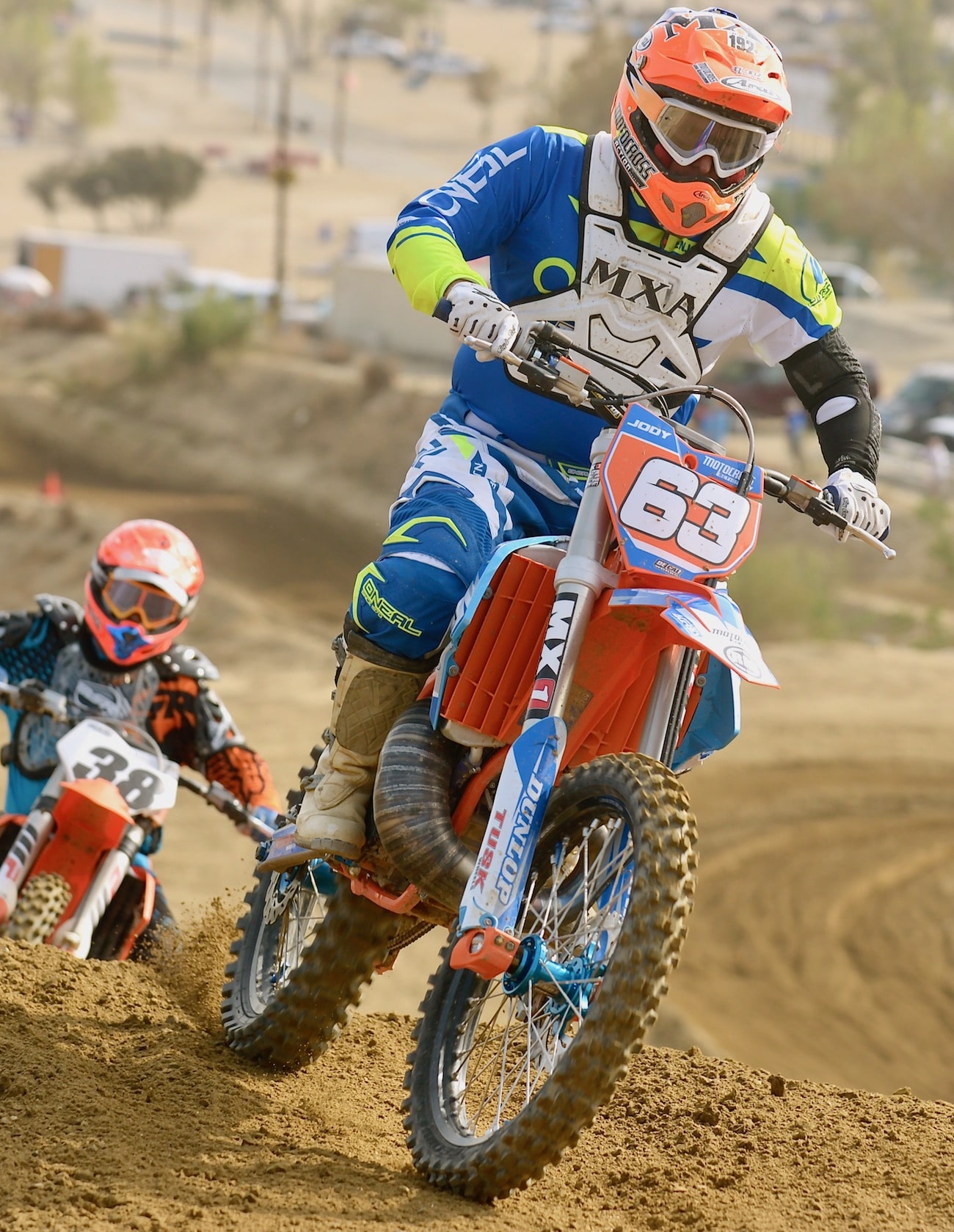 Jody loves two-strokes, although his job requires him to race ten times as many four-strokes as two-strokes—It’s industry policy.
Jody loves two-strokes, although his job requires him to race ten times as many four-strokes as two-strokes—It’s industry policy.
Two-strokes. I’m pretty sure that no one at the AMA has ever heard of them—except for when they devised the rules package, displacement formula and fuel specs guaranteed to make sure that no one watching an AMA event would ever hear of them either.
Dyno charts: MXA dynos every bike that we test. Sounds scientific, doesn’t it? To the geek in all of us, it is the fairest way to test the peak power of an engine. That’s true—if you are racing your CRF450 on a set of rollers that is slugging through a puddle of water. The great thing about dyno readings is that they present both sides of the story.
First, test riders can use them to confirm exactly what they felt—and have a nifty piece of graph paper as proof. Second, they can contradict what the test riders felt—in which case that nifty sheet of graph paper can quite easily be crumpled up and thrown in the waste basket. Until dynos go to the starting line, they are a tool, not the answer.
Motocross gear: I’m not exactly sure when the starting gate of a motocross race first began to look like the graduation photo from Clown College, but I’m guessing Jeff Emig is somehow responsible. What are the clothing designers thinking? I let the consumer off the hook on this one because, as you know, their fashion sense includes wearing wool stocking caps in midsummer (talk about the fish stinking from the head). Does a pair of riding pants in red/yellow/blue paisley really fit in a sport whose founders wore animal skins? If I want to take a Rohrshach test, I’ll visit a shrink.
Sound: There is no doubt that bikes need to be quieter, and I have a plan. What the motorcycle industry needs to do is spend millions of dollars on an advertising campaign. It would have to have a catchy slogan like “Less Sound=More Ground.” All the magazines could run free public service announcements, bumper stickers would have to be printed, and the AMA would be required to get behind the movement. I can’t believe no one thought of this before. If only we had been smart enough to do this 40 years ago, bikes would be quiet today.
THE FRUSTRATIONS OF PARENTAL INTERFERENCE LED ONE UNNAMED TEAM MANAGER (ROGER DECOSTER) TO SAY THAT IN THE FUTURE, “I’M ONLY GOING TO HIRE RIDERS FROM ORPHANAGES.”
Modern pros: It is often said that drug abuse is robbing the nation of its brightest and best. Hardly! Drug abuse is nature’s way of culling the herd (much like lions are responsible for keeping the average speed of gazelles as high as possible). And the same holds true for the current crop of AMA Pros. They are responsible for lots of good things: They aren’t clogging up America’s schools. They keep Bentley dealers in business. For a bunch of guys who don’t have to be anywhere in particular on time, they are surprisingly responsible for Rolex’s healthy stock portfolio. They keep the overstock of really ugly mag wheels to a minimum. and they make team managers earn their salaries.
Good old dad: Factory riders in their teens come with parents (actually vice versa). Every kid needs the guidance of his parents. And, as it turns out, so do the team managers they ride for. The frustrations of parental interference led one unnamed team manager (Roger DeCoster) to say that in the future, “I’m only going to hire riders from orphanages.” I say poppycock! What could be more charming than a factory semi littered with the wives, girlfriends, manfriends, babies, fathers, uncles and aunts. It’s not like it’s a workplace or anything.
Television: A good television network has to find something to hang its hat on. For MTV, it was music videos. For Speed it was racing of all kinds. For TV news it isn’t what’s going on the world, its what’s going on in the newscaster’s head. Today, you’re not likely to find much racing on prime time broadcast TV, just like you’re not likely to find much music on MTV. Music Television isn’t about music, its about pre-canned videos, game shows, reality TV and talking heads. Guess what? Don’t turn on network news unless you want to hear a bubbled headed bleach blonde’s opinions on politics. Conversely, you will discover that the only high-profile racing shows on your cable network are NASCAR pre-race shows that last longer than a 500-mile race and strangely enough, it’s on channels that aren’t even showing the race. As for Supercross and motocross, they want you to dig deeper into your pockets to help them line their coffers. The race promoters thought process is, “Why grow the sport by making it accessible to millions, when you can milk the true believers over and over again.”
But don’t take my opinion on any of this—you’re reading this for free, which means I’m out of touch with the driving force of the world around me.
• MXA VIDEO: 2025 HONDA CRF450 WORKS EDITION FIRST RIDE
The 2025 Honda CRF450 Works Edition retails for $12,599, which is a $2900 upcharge from the stock 2025 Honda CRF450. It comes with a Yoshimura RS-12 exhaust system hand-polished ports, custom-tailored ECU settings, Hinson clutch basket and s Hinson clutch cover,Kashima-coated stanchions, titanium oxide-coated fork legs and an 18mm shock shaft 18mm shock shaft (the stock model has a 16mm shaft).
• MXA PRODUCT SPOTLIGHT: 25-QUART WINGMAN HARD COOLER
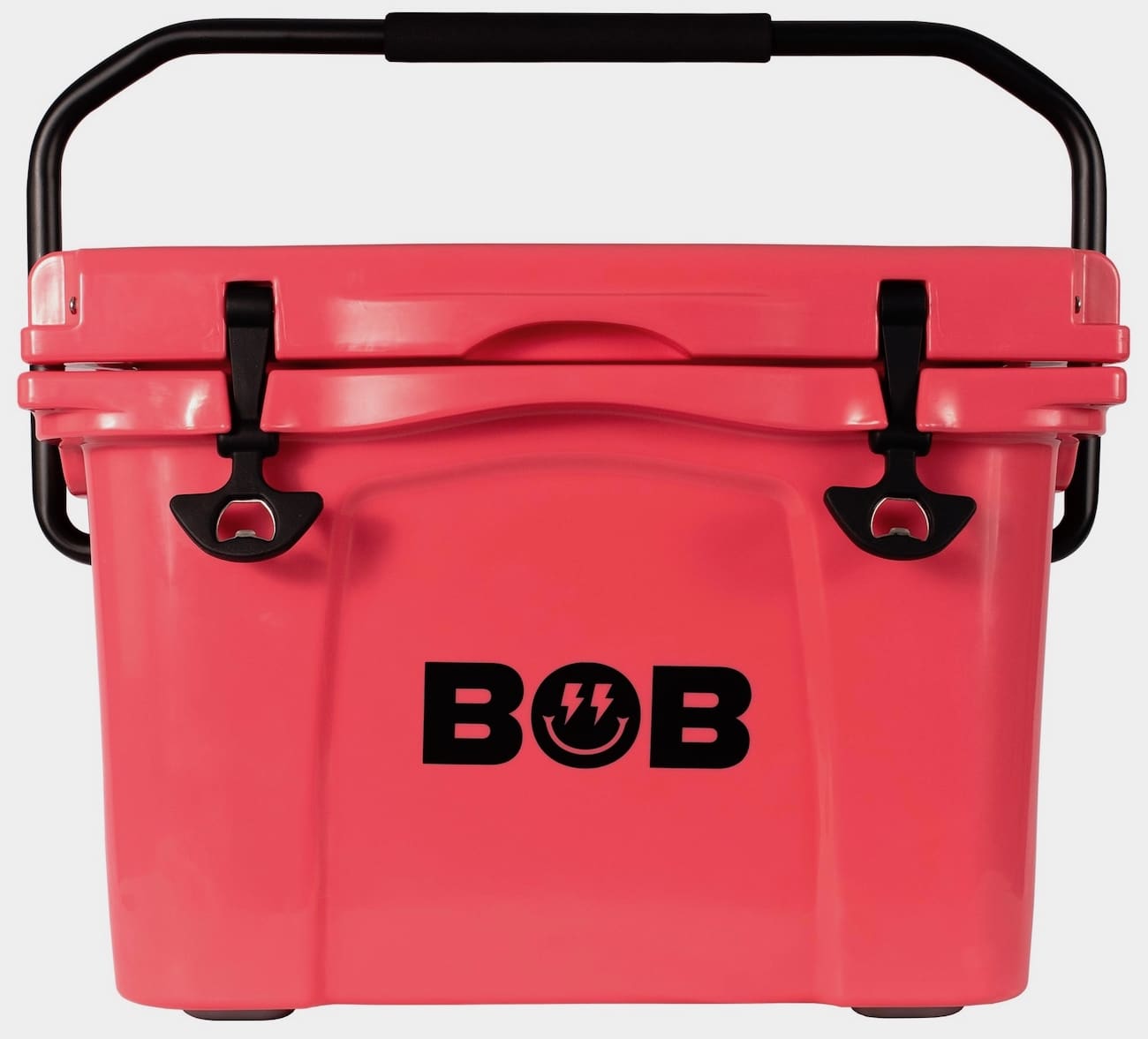 “Get the party started with the Wingman. It is a 25-quart cooler in Vice Red designed to hold a 30-pack, snacks and plenty of ice. Made from pressure-injected, commercial-grade polyethylene, the thick, insulated walls and lid keep the contents chilled. The cooler is available in six stunning colors for just $245.00.”— www.bobscool.com or (480) 420-7470.
“Get the party started with the Wingman. It is a 25-quart cooler in Vice Red designed to hold a 30-pack, snacks and plenty of ice. Made from pressure-injected, commercial-grade polyethylene, the thick, insulated walls and lid keep the contents chilled. The cooler is available in six stunning colors for just $245.00.”— www.bobscool.com or (480) 420-7470.
• MXA RACES A 1962 WATSON OFFENHAUSER ROADSTER AT LAGUNA SECA
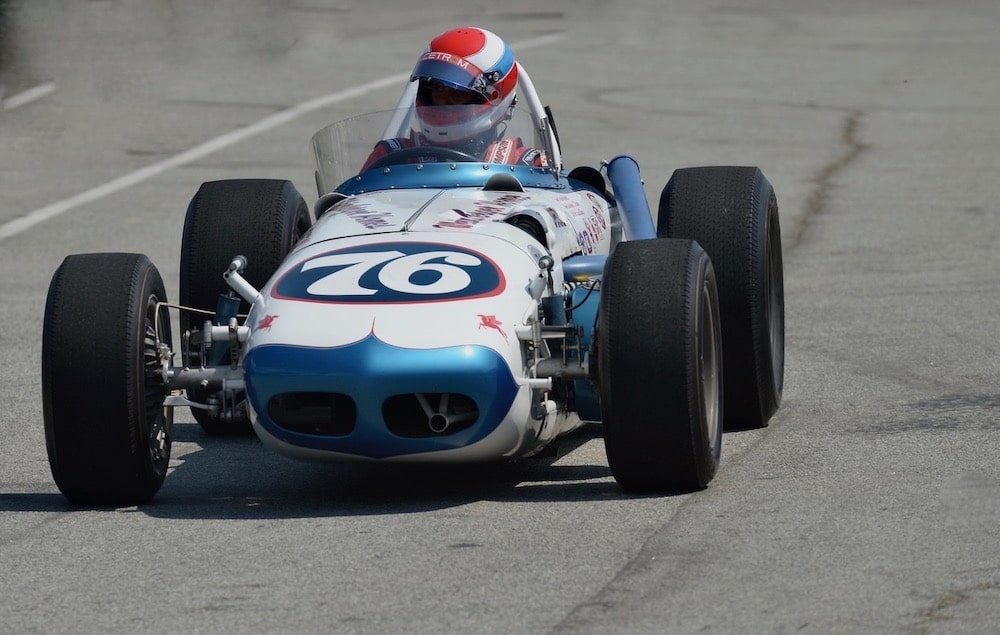
From the front the Watson looks smaller than it really is. In truth, Ernie’s helmet was a bigger part of the Watson’s aerodynamics than any part of the car.
Ernie Becker is a sports car driver by trade and a motocross racer on his off-weekends from the paved circuits (he was a Pro Circuit Husqvarna rider back in the day). So, when he was offered the opportunity to race a classic 1962 Watson roadster at the Monterey Motorsports Reunion, he jumped at the chance and asked former and current MXA wrecking crew members Gary Jones and Dan Alamangos to go with him. Only three of these Indy roadster were built in 1962 by famed builder A. J. Watson (only 23 were ever built) and were driven by Jim McElrath to fifth at the 1962 Milwaukee 200 and 4th at the 1962 Trenton 200, Lloyd Ruby raced it to third place in the 1964 Indianapolis 500 and Gordon Johncock raced it to a fifth place finish in the 1965 Indy 500. This A.J. Watson roadster was the last front engine car to complete all 500 miles at the Indy 500. It is powered by a 253.5 cubic inch Offenhauser four with a two-speed Halibrand transmission. It qualified for the 1965 Indy 500 with an average speed of 155 mph. From here on, we will let Ernie tell his story of racing this 59-year-old warhorse.
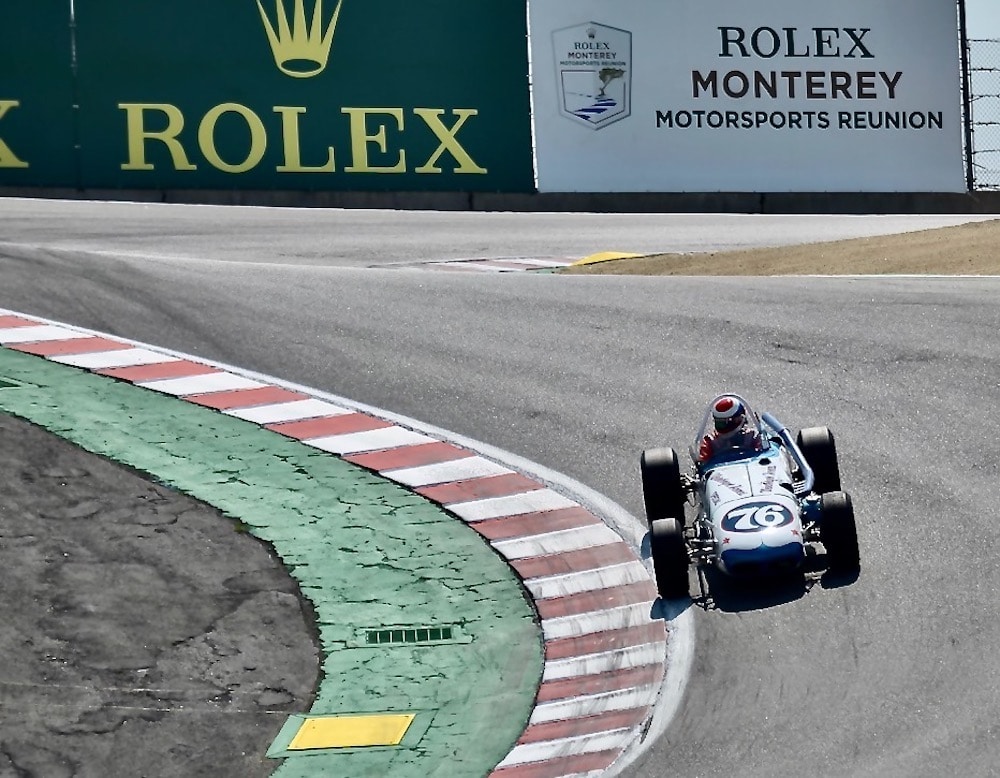
Ernie Becker navigating the Laguna Seca Corkscrew in the front engine 1962 Watson Roadster.
“The car I drove at the Rolex Monterey Motorsports Reunion in the Indy Car exhibition races at Laguna Seca was one of the three cars built by A.J. Watson for the 1962 season. It’s priceless piece of Indy 500 history (a 1960 Watson Roadster sold for $577,500 eight years ago) and I was honored to be selected to drive this vehicle for the Malloy Foundation Collection. The owner, Tom Malloy, is an avid motorsports enthusiast and his companies, Trench Shoring and Ed Pink Racing Engines are activity involved in the automotive racing industry in many ways.

Gary Jones (World Vet T-Shirt), Ernie Becker (PCP Pro Circuit T-shirt) and Dan Alamangos (50th Anniversary “On Any Sunday” T-shirt) stand behind the 59-year old A.J. Watson-built Indy Roadster.
“What makes this car so special is that A.J. Watson built his frames using guidelines he laid out in chalk on the shop floor. Featuring a ladder frame, the 1600-pound Roadster was 32 inches wide at the rear and 29 inches wide at the front. Four torsion bars were used, two in the front and two in the rear. The pit crew could adjust the torsion bar’s tension at each corner to increase or decrease roll stiffness.
“A.J. Watson kept the Offy engine upright and concentrated on placing it as far left as possible. Which means 56% of the 1460-pound car was on the left. This was achieved by placing the Offenhauser engine six inches off the centerline of the chassis and the chassis was also offset an additional two inches to the left. The goal was to make the car turn left very efficiently.

Note the offset of the left and right-side wheels.
“The Meyer-Drake-Offenhauser engine was a double-overhead-cam, Hilborn fuel-injected, 16-valve, 253.5 cubic-inch four. USAC reduced engine size from 270 cubic inches to 255 cubic inches, which inspired Watson to develop a short-stroke 253 cubic-inch power plant that generated more horsepower than its 255 cubic-inch, long-stroke counterpart.
“The Watson Indy Car Roadster raced in four consecutive Indianapolis 500 mile races. The best finish was 3rd in 1964 with Lloyd Ruby driving. In 1965 Gordon Johncock drove the car to a 5th place finish and was the last front engine roadster to complete all 500 miles at the Speedway. The drivers in that era were a different breed. They knew the risks, all were competitive and they all wanted to win. They were total racers. And it makes sense, their families were from “The Greatest Generation” era.
 The transmission and drive shaft were next to Ernie’s left leg and the steering wheel was more tractor than race car.
The transmission and drive shaft were next to Ernie’s left leg and the steering wheel was more tractor than race car.
“Driving the Watson Roadster was like stepping back in time—all analog feel with no safety concerns whatsoever. It rumbled, backfired, shook while idling and it was loud! And when it backfired a fine mist of methanol sprayed through the cockpit and the scent made you really think you are going back in time. Paired with a two-speed Halibrand gearbox (with the drive shaft running right next to your leg) and sitting in an upright position with a two-foot wide steering wheel, comfort wasn’t even in question. But that was the normal for a Indy Car Roadster.”
 From 1947 to 1964, every winner of the Indianapolis 500 was using an Offy engine, and in many of those years the entire podium was powered by Offenhauser. The “Big Four” Offy engines could make up to three horsepower per cubic inch, which remains an impressive figure by modern standards.
From 1947 to 1964, every winner of the Indianapolis 500 was using an Offy engine, and in many of those years the entire podium was powered by Offenhauser. The “Big Four” Offy engines could make up to three horsepower per cubic inch, which remains an impressive figure by modern standards.
“As you let the clutch out and got the car rolling, the engines revs began to build and the four-cylinder, mechanically fuel-injected, methanol burning engine began to smooth out. When it came awake, it accelerated like a WW2 fighter plane taking off for combat. The power delivery was solid, it accelerated very quickly and the throttle response was good. It asked you to push hard on the gas pedal to go fast. And back in the day it did. Gordon Johncock qualified for the Indy 500 with an average qualification time of 155.012 mph in 1965. Which means this old fighter was doing 180 mph down the main straights at the Indianapolis Moto Speedway. With your backside just four inches off the ground the sensation of speed was amazing—especially since there was little to nothing on or in the car for protection. Your upper torso is fully exposed and your head is part of the aerodynamics of the car. At max rpm, which for Laguna Seca was 5000 rpm, it still wanted to keep climbing in power.
 They don’t have Indy 500 Offy-powered cars in Australia, so Dan Alamangos wanted to get behind the wheel.
They don’t have Indy 500 Offy-powered cars in Australia, so Dan Alamangos wanted to get behind the wheel.
“Driving the car required pure-fighter pilot instincts. When you asked the car to do something, it responded like it should. The 1962 Watson Roadster was a fan favorite at the historics and my only assignment was to honor the car the way it deserved, which was being out on the track running it with a bit of anger. But since this car is priceless, I didn’t want to make a mistake and be the guy that wrecked one of the few running Watson Roadsters on the planet. Plus, the car still had the tires on it that Gordon Johncock used back in 1965. By modern standards they were large circumference and small width. The 60-year-old rubber didn’t want to be pushed, which was understandable, so I babied it (keeping it under 100 miles per hour for the preservation of this incredible piece of automobile history and, of course, my own skin). The last thing I needed to do was throw a tread in the Corkscrew. However, you know your doing something right when 1986 Indy 500 winner Bobby Rahal pulls up along side of you down the straights, slows his late-model winged Indy car down, looks over at you and gives you a big thumbs up.
 Gordon Johncock at the 1965 Indy 500.
Gordon Johncock at the 1965 Indy 500.
“It was a weekend to remember. And have four-time AMA National Motocross Champion Gary Jones and Australian motocrosser and fellow MXA wrecking crew member Dan Alamangos as my guests for the weekend also made the Monterey Historics even more special. The only thing that was missing was my orange MXA helmet…maybe next time.
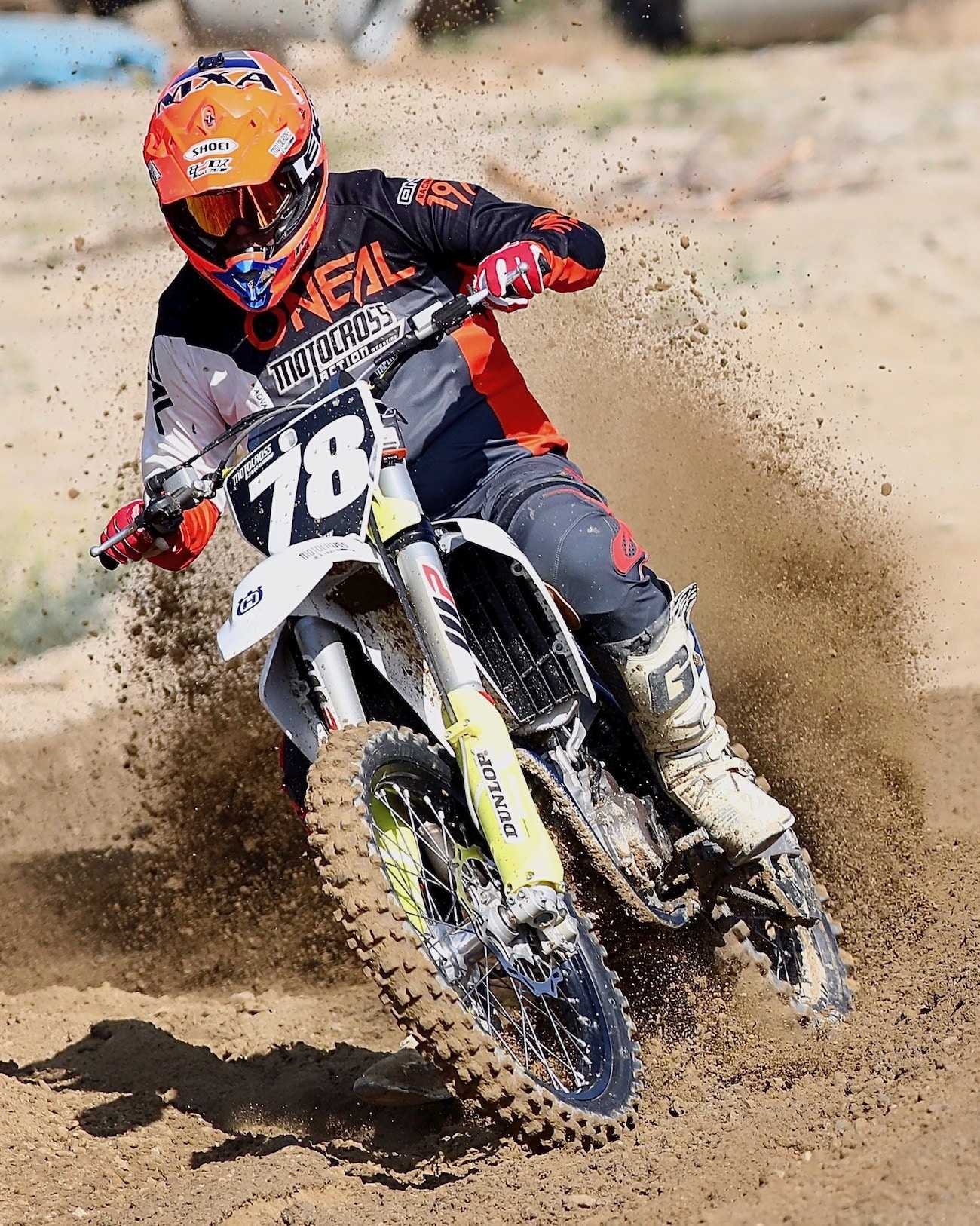 Ernie Becker in action on his off-weekends from sports car driving.
Ernie Becker in action on his off-weekends from sports car driving.
“Special thanks to the Tom Malloy for letting me have the opportunity of a lifetime to drive this piece of motorsports history. Also a big thank you to the Trench Shoring and Ed Pink Racing staff. It takes a lot of support to keep one of these old fighters running. They went above and beyond the call of duty all weekend.”
• MXA PRODUCT SPOTLIGHT: 2025 FXR HELIUM GEAR
 “FXR Moto is revolutionizing motocross apparel with its commitment to the continual advancement of the Helium line. Our focus on performance and breathability through perforated Omni-Stretch materials, combined with our renowned slim, athletic fit, ensures riders experience unrestricted comfort every time they hit the track. Thanks to our collaboration with elite riders for ongoing testing and refinement, FXR’s Helium collection sets a new benchmark for premium motocross gear, excelling in fit, finish, durability and performance. Our Helium jersey sells for $79.99, and our pants sell for $219.99.— www.fxrracing.com or (877) 999-9798.
“FXR Moto is revolutionizing motocross apparel with its commitment to the continual advancement of the Helium line. Our focus on performance and breathability through perforated Omni-Stretch materials, combined with our renowned slim, athletic fit, ensures riders experience unrestricted comfort every time they hit the track. Thanks to our collaboration with elite riders for ongoing testing and refinement, FXR’s Helium collection sets a new benchmark for premium motocross gear, excelling in fit, finish, durability and performance. Our Helium jersey sells for $79.99, and our pants sell for $219.99.— www.fxrracing.com or (877) 999-9798.
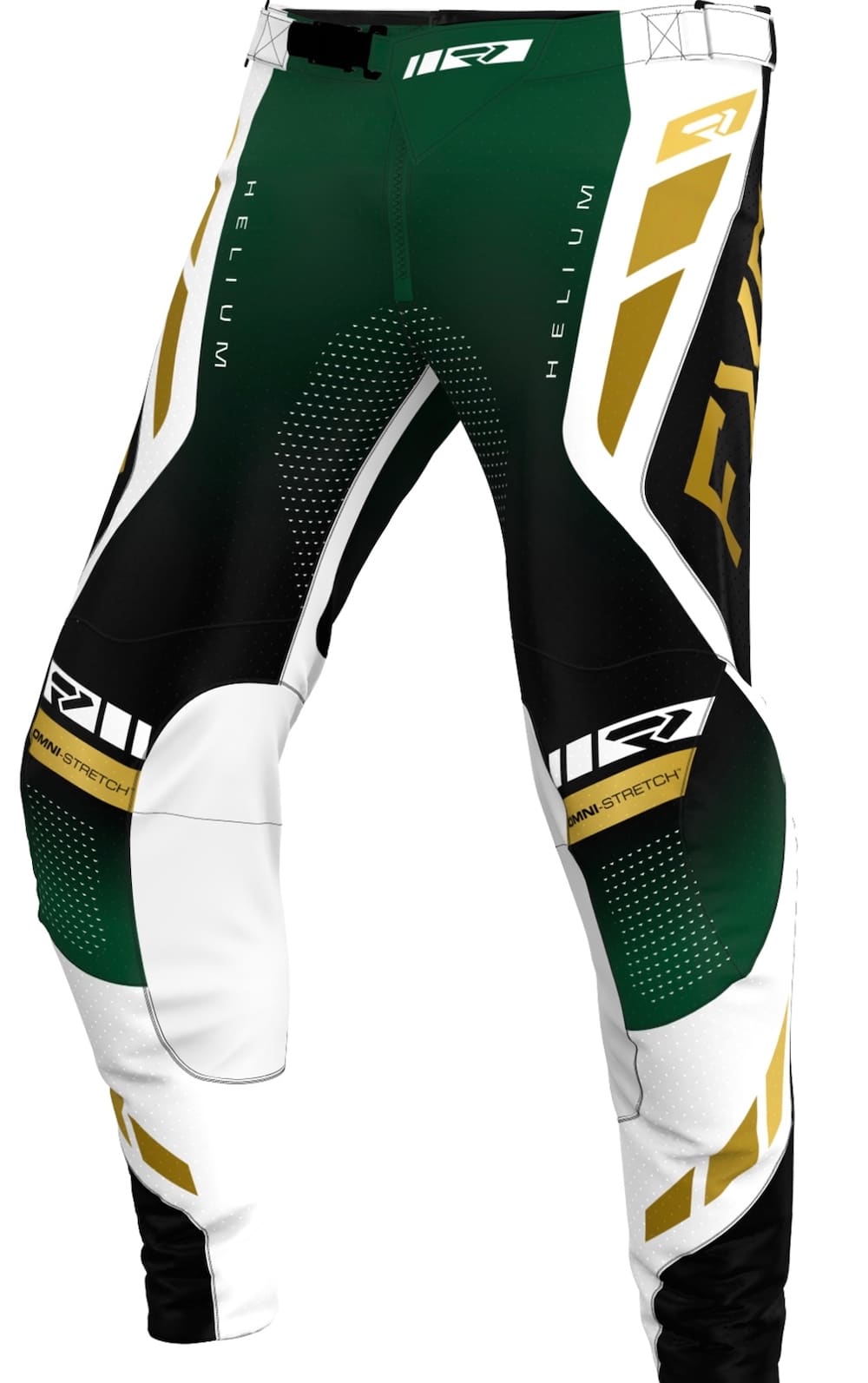 “FXR Moto is revolutionizing motocross apparel with its commitment to the continual advancement of the Helium line. Our focus on performance and breathability through perforated Omni-Stretch materials, combined with our renowned slim, athletic fit, ensures riders experience unrestricted comfort every time they hit the track. Thanks to our collaboration with elite riders for ongoing testing and refinement, FXR’s Helium collection sets a new benchmark for premium motocross gear, excelling in fit, finish, durability and performance. Our Helium jersey sells for $79.99, and our pants sell for $219.99.— www.fxrracing.com or (877) 999-9798.
“FXR Moto is revolutionizing motocross apparel with its commitment to the continual advancement of the Helium line. Our focus on performance and breathability through perforated Omni-Stretch materials, combined with our renowned slim, athletic fit, ensures riders experience unrestricted comfort every time they hit the track. Thanks to our collaboration with elite riders for ongoing testing and refinement, FXR’s Helium collection sets a new benchmark for premium motocross gear, excelling in fit, finish, durability and performance. Our Helium jersey sells for $79.99, and our pants sell for $219.99.— www.fxrracing.com or (877) 999-9798.
• MXA TECH SPEC: EXPLAINING TWO-STROKE SPARK-PLUG HEAT RANGES
Spark plugs come in different heat ranges. To make it easy for you to see the heat range of your spark plug, the number is printed into the plug’s part number. Here is how it works. The smaller the number, the hotter the plug. Plugs with a “7” heat range are hotter than “8” plugs, which are hotter than “9” plugs. Contrary to a popular misunderstanding, a hotter or colder plug doesn’t make a hotter (and bigger) or cooler (and smaller) spark. A plug’s heat range only dictates how quickly a plug allows the transfer of heat to the cylinder head or water jacket. A higher heat range means the plug will cool slowly, causing it to stay hotter during operation, while a cooler plug dissipates heat more quickly and runs at a colder temperature.
If the heat range is too high for a particular engine, it will allow the combustion chamber to create hot spots that cause the engine to detonate. If the heat range is too low, it will never retain heat long enough to burn off excess carbon deposits, which will continue to build until fouling occurs. Although it’s always best to stick with the factory-recommended heat range at the start of a new bike’s life, it’s no secret that tuners will run different heat ranges to better complement specific tuning setups or different riding and track conditions.
Do not experiment with hotter or colder spark plugs unless you have experience reading spark plugs or were instructed by a reputable tuner; however, every two-stroke rider worth his weight in iridium has replaced his bike’s NGK B8ES plugs with an NGK B7ES plug at one time or another. Often because that was all he had or all he could borrow, or he just liked to live dangerously.
Here are some standard-issue heat-range tricks that might guide you in the right direction, but none of the following tips are concrete, sure-thing, black-and-white examples. Don’t mess with your plug’s heat range unless you can afford to make a mistake.
(1) Hot temperatures: Tuners might switch to the next cooler plug when the ambient air temperature is high, say above 95 degrees. This is an attempt to offset the hotter operating conditions created by the higher outside temperatures.
(2) High rpm: The higher an engine is revved, the more internal heat it creates. On high-rpm racetracks, tuners may run a cooler plug to offset the increase in cylinder-head temperatures.
(3) Riding style: If you are a pin-it-to-win-it style of rider or your two-stroke exhaust pipe turned blue after one ride, or the spectators lining the fence cover their ears when you ride by wide open in second gear, you should lean towards a cooler heat-range plug.
(4) Length of event: Supercross-style tracks require quick and short bursts of power. Seldom does the rider twist it to the stops and wind out the machine for any length of time. Most local Supercross events are held at night when the air temperatures are cooler. Thus, tuners will run hotter plugs in these conditions so the bikes will start quicker, have better throttle response and run crisper. You should be aware that when you move from your local Supercross layout to a true-to-life motocross track with deeply ripped dirt and long lap times, you need to take the hot plug out.
Spark-plug gap size has no impact on the heat rating, but it does impact the intensity (how hot the tip is) of the plug, which affects the rate of combustion. Don’t confuse the hotness of the tip with the dissipation of heat (heat-range rating). The smaller the gap, the more intense and concentrated the spark and the less voltage required to jump the gap.
This comes into play when the bike is cutting out on the top end (more common on vintage dirt bikes with old-school ignition systems). Old-style ignition systems cannot produce enough energy to overcome the compression and thicker fuel/air mixtures, and the plug won’t deliver a consistent full arc. Tuners can trick the ignition by tightening the gap, which intensifies the spark and lessens the voltage requirement. Another factor to remember is that the more concentrated the spark, the faster the rate at which the edges of the electrode wear.
Increasing the gap makes the duration of the arc longer, which means that more fuel within the combustion chamber is ignited for a longer period of time. In theory, the motorcycle should be quicker throughout the powerband. If the gap becomes too large, however, the ignition will not be able to keep up with the increased current demand. Never increase the gap to a greater measurement than recommended by the plug company or your tuner. Check the spark plug gap every time you install a new plug and set it to the manufacturer’s recommended plug gap, because it isn’t set for your bike, model or year at the factory.
• MXA PRODUCT SPOTLIGHT: SCAR RACING TITANIUM GRIPPER FOOTPEGS
“Scar Racing Gripper footpegs are made with aerospace-grade titanium and strong welding. The body of the footpeg is 60mm wide, making it 10mm wider than most OEM pegs. The pegs are also ultralight at approx- imately 300 grams per pair. Each set is hand-fabricated to maintain premium quality, and the pegs have 27 teeth for extra strength and grip. They retail for $269.95.”— www.scar-racing.com or [email protected].
• MXA AD OF THE WEEK—THOSE WERE THE GOOD OLD DAYS — PRICE WISE
 Bill Keefe modeling MXA’s hat, jersey and wallet. Hard to believe that MXA sold T-shirts for $10.75, caps for $8.50 and Jerseys for $19.50.
Bill Keefe modeling MXA’s hat, jersey and wallet. Hard to believe that MXA sold T-shirts for $10.75, caps for $8.50 and Jerseys for $19.50.
MXA PRODUCT SPOTLIGHT: MX-TECH NATIONAL SHOCK
 “Our National shock is the lightest, most advanced shock available. It uses the best coatings and offers excellent adjustability and a custom setup for every rider. It replaces the stock shock on all modern bikes. The shock pictured is for the 2024 KTM platform and is priced at $2640.00.”— www.mx-tech.com or (877) 850-5114.
“Our National shock is the lightest, most advanced shock available. It uses the best coatings and offers excellent adjustability and a custom setup for every rider. It replaces the stock shock on all modern bikes. The shock pictured is for the 2024 KTM platform and is priced at $2640.00.”— www.mx-tech.com or (877) 850-5114.
• ON THE RECORD: THE ONCE GREAT 2006 SUZUKI RM250
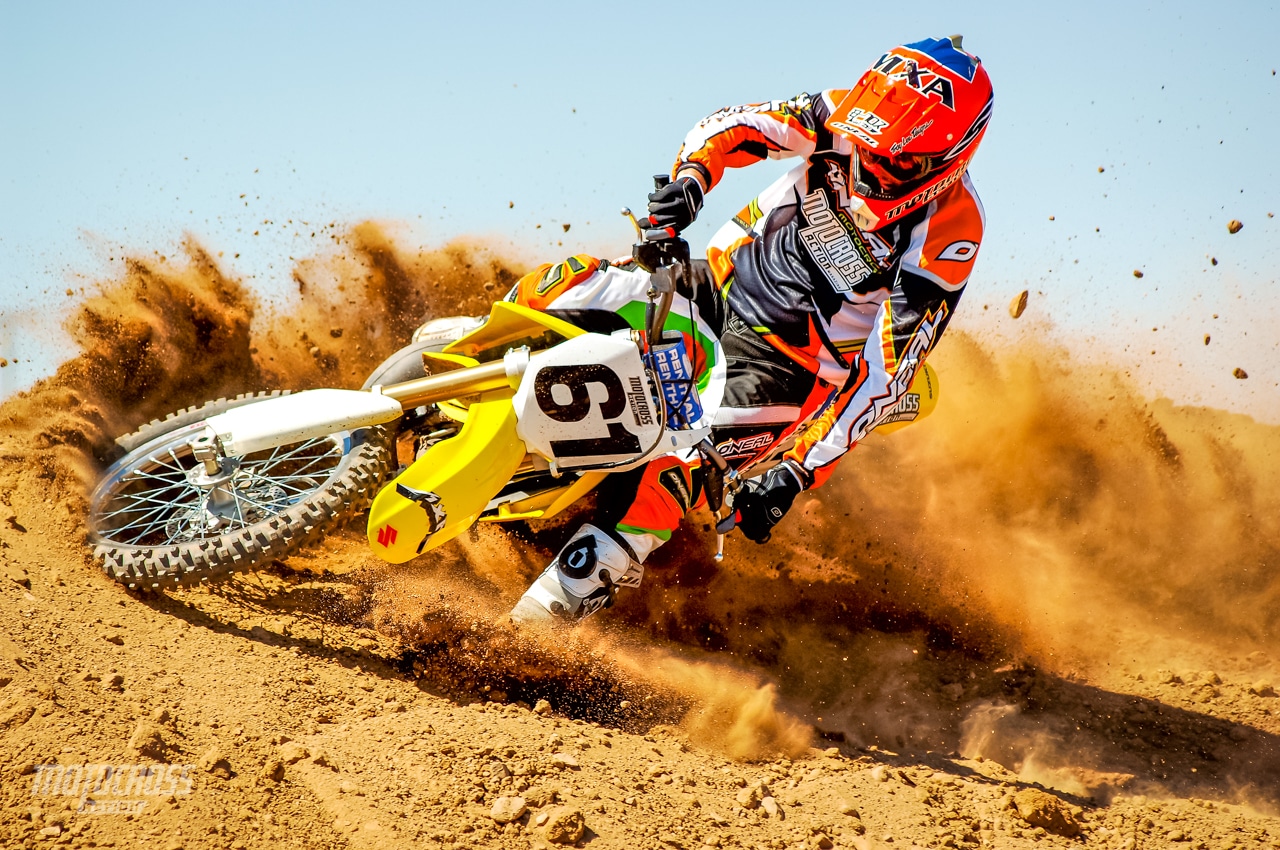 This test is from the November 2005 issue of Motocross Action Magazine.
This test is from the November 2005 issue of Motocross Action Magazine.
The MXA wrecking chose the Suzuki RM250 as the 250cc two-stroke Bike of the Year in 2004 and 2005. To our way of thinking, only two bikes were worthy of consideration for the 250cc two-stroke crown–the YZ250 and the RM250. The 2005 Yamaha YZ250 was a terrific machine. It had stable handling, aluminum frame, decent suspension and a tractor of an engine. So why didn’t it win? That’s simple. In a world dominated by booming thumpers, the Suzuki RM250 exhibits the exact opposite traits of a four-stroke. Where the four-strokes are torquey, broad, beefy, slow revving and tractable, the RM250 was snappy, barky, nimble, sharp, light and aggressive. In a nutshell, the Suzuki RM250 is everything that a four-stroke isn’t.
What we admired about the 2004 RM 250 and 2005 RM250 was their uniqueness. In what is rapidly becoming a clone world–it was a rebel. Yes, Virginia, we know that rebellion doesn’t always play well in the hinterlands, but if you are still considering riding a 250cc two-stroke, you must have a streak of rebel in you. The MXA wrecking crew awarded the whole ball of wax to the RM250 because it was the most two-stroke of all the two-strokes. That’s something to be proud of.
The question at hand is whether the 2006 Suzuki RM250 can make lightning strike three times.
Q: IS THE 2006 RM250 ENGINE FASTER THAN THE ’05?
A: Yes, but it doesn’t feel faster. That may sound like a left-handed compliment, but don’t be confused. The 2006 Suzuki RM250 doesn’t feel faster than the 2005 model, but it has a vastly improved powerband. And, the best thing about the new powerband is that it is easier to go fast on than previous RM250 iterations. How so? Prior to 2006, an RM250 powerband could be described thusly: Not much bottom. A hard hit in the middle. A rapid turnover. Brisk power into the upper middle. An early sign-off. In short, it hit hard and pulled hard—just not for very long.
For 2006, Suzuki added considerably more low-to-mid power. The sudden hit in the middle has been accentuated by a nice, pleasant and usable roll-on power that starts close to idle. The ’06 picks up cleanly off the bottom and surges through the midrange. Very nice.
Q: WHY DOESN’T IT FEEL AS FAST AS THE 2005 MODEL?
A: The added low-end takes all the dramatics out of the midrange hit. Last year, very little happened, and then suddenly the RM250 burst to life. Now, things happen with minute twists of the wrist and the bottom end is filled in enough that the old-school midrange hit is less noticeable. It isn’t less of a hit, just that the hit is melded into a bigger picture.
Q: IS THE 2006 RM250 ENGINE BETTER THAN THE 2005 MODEL?
A: Lightyears better. Thanks to the enhanced bottom-to-mid transition, the Suzuki has double the number of options for its riders. In the past, the best solution to every situation was to hammer the throttle and hang on. It was a gun-and-run engine that didn’t like to be run at quarter-throttle, half-throttle or three-quarter throttle. It demanded full throttle whether the corner was loose, hard or off-camber.
Not so in 2006. Hallelujah! The RM250 can now be ridden with a sensitive wrist through tight turns. It can be babied around an off-camber at quarter throttle. It can be coasted and blipped through switch backs. The 2006 engine is versatile. The previous version of this powerplant was flat-out or nothing.
Q: HOW DID SUZUKI IMPROVE THE 2006 RM250 POWERBAND?
A: We admire Suzuki’s straightforward strategy for the ’06 engine. No gimmicks, just six tried-and true tuning techniques.
(1) Exhaust port. Last year Suzuki raised the corners of the exhaust port and widened the boost ports to get a little more top-end overrev. This year they reshaped the exhaust port, advanced the port timing and optimized the boost ports. They didn’t undo what they did in 2005, but went for a middle-of-the-road porting strategy.
(2) Power valve. Suzuki altered their power valve to delay its opening momentarily to help the low-end power. Then, they sealed up the sub exhaust valve ports to cut down on blow-by and worked on the cam rod, valve arm and valve linkage for quicker actuation.
(3) Carb intake. By shortening the carb intake pipe they cut down on lag time for increased low-end.
(4) Crankcase volume. By changing crankcase volume, you can increase or decrease pumping pressure, fuel flow or fuel density. For 2006, Suzuki increased the clearance between the crankshaft and crankcase to increase crankcase volume and change the primary compression ratio of the engine. This aids low-end power.
(5) Ignition. The CDI mapping was reconfigured for more response at low rpm.
(6) Reed petals. One of the easiest ways to improve low-end power, on any bike, is to install more flexible reed petals–softer reeds open sooner. For 2006, Suzuki has all-new carbon fiber reeds.
Q: WHAT DOES THE 2006 RM250 POWERBAND FEEL LIKE ON THE TRACK?
A: The biggest compliment we can pay the 2006 RM250 engine is that it is more like a Yamaha powerband than before. The YZ250 is an amazingly flexible engine that can run from right off idle all the way to the shrieking top-end. Best of all, the YZ250 can accept every throttle setting without a whimper. For 2006, the RM250 engine has cloned some of Yamaha’s magic (but not all of it). The ’06 RM250 is more flexible.
The most meaningful praise test riders had for the ’06 RM250 powerband was that late in a moto, when they got tired, they could keep the RM250 moving briskly with little or no effort. Conversely, on the 2005 RM250, you either went all-out or you went slow. Our test bike made 46.2 horsepower.
Q: WHAT ABOUT THE JETTING?
A: We struggled a little in the heat of summer with richness, but that is perfectly normal. For hot days we used the supplied half-clip-leaner NEDK needle (with the clip in the third position) and a 165 main jet.
Q: WHAT ABOUT THE CLUTCH?
A: Ghastly. It was mushy and vague when fresh, and it didn’t stay fresh for very long. Suzuki upgraded the plates and basket for 2006, but it was a losing effort. This is the weakest clutch in the 250 class..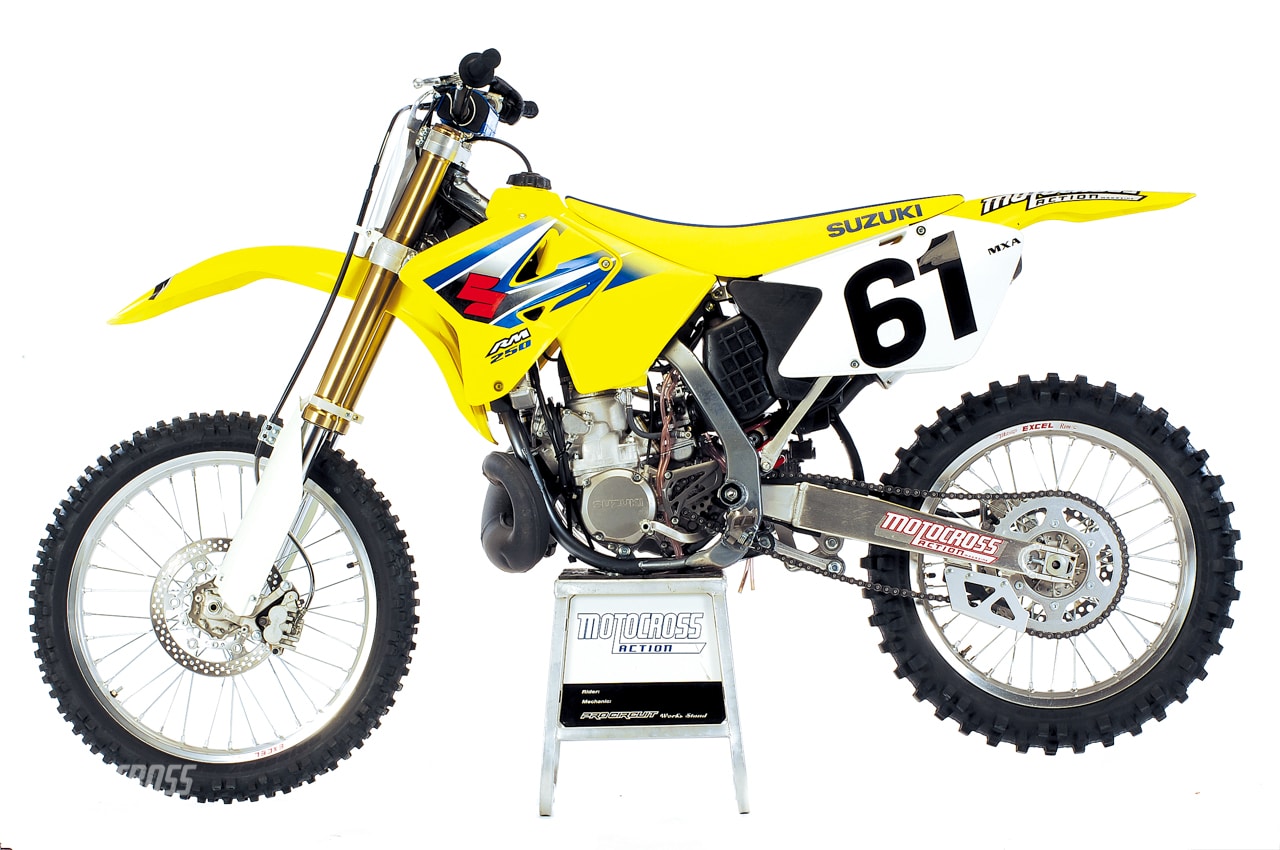
Q: HOW DOES IT HANDLE?
A: Suzuki is the only manufacturer willing to push the handling envelope. Each manufacturer has its own personality—etched in stone. Honda started playing it safe in 1994 when they neutered the super-accurate ’93 model. KTM never took a chance on building a bike that would turn. Kawasaki’s handling is an acquired taste—for ax murders. Yamaha has a middle-of-the-road chassis that doesn’t do anything wrong—or anything great.
Suzuki, on the other hand, is all cut-and-thrust. They are willing to give up straight-line stability for quickness, to trade a little head shake for accuracy in the corners and to seek one superlative at the cost of others.
The question you have to ask yourself is—are you willing to give up some sense of security at speed to be able to slice, dice and Julienne the competition in the corners? Answer yes and you have no choice but to race a Suzuki. It is the only bike that can walk the tightrope between brilliant and schizophrenic.
Q: DID SUZUKI TRY TO CALM THE HANDLING DOWN IN 2006?
A: No. They gave it some lip service in their press releases, but in reality, Suzuki rolled the dice in 2006 and made the chassis even quicker by cutting the steerer tube off the old frame and moving it back 5mm. By altering the head tube, Suzuki moved the engine forward to put more weight on the front wheel. More weight equals more bite in the turns and that is something that some of Suzuki’s competitors could benefit from, but we have to confess that we don’t think the RM250 needed to turn better. It was already super responsive. We saw Ricky Carmichael try this new frame out at the Las Vegas Supercross. It wasn’t legal to race, but he rode it during the day sessions just to get a preview of what 2006 holds for him.
What do we think of the new frame? We think it turns better. We didn’t fret over the increased head shake because racing a Suzuki is all about setup. Seeking perfect balance between the front and rear is a constant ballet of race sag and fork tube height. We slid the forks down in the clamps, ran 100mm of sag and kept our reflexes on Defcon-4.
Q: HOW GOOD IS THE 2006 RM250 SUSPENSION?
A: Showa’s on a roll. Very good stuff. Very good indeed.
Forks: Good forks. They are stiff enough for Pros, yet can be toned down for much slower riders. We ran the compression setting on eight clicks out and the rebound on 13.
Shock: Every MXA test rider loved this shock—without exception. It goes straight through the nastiest stuff. Never kicks, hops or burps. It can barge through anything. Set the rebound on 12 clicks out, low-speed compression on 10 and high-speed between 1-3/4 and 2 turns out.
Q: WHAT DID WE HATE?
A: The hate list:
(1) Tires: We can’t live with the Bridgestone front tire. It tracks into corners decently, but lets go without any warning. On a bike with a tendency to oversteer as much as the RM250, you need the best rubber possible. Drop-kick the Bridgestones.
(2) Clutch: At least it didn’t jerk or chatter like it used to, but it also didn’t work very well. We opted for the stiffest clutch springs we could find.
(3) Front rotor: We don’t see any difference between Suzuki’s rotor and their competitors’, but we constantly bend Suzuki rotors and no one else’s.
Q: WHAT DID WE LIKE?
A:The like list:
(1) Brakes: All the pucker power you will ever need.
(2) Bars: Last year Suzuki had generic aluminum bars on the RM250. This year they have true-to-life Renthals.
(3) Footpegs: We are mystified by the sudden surge in titanium footpegs on production motorcycles. It does save weight, but so low on the frame that it has very little functional effect. And, if you are going to take the time and money to build a titanium peg, why not make it 57mm wide. That is the optimum width.
(4) Graphics: The blue and yellow look is stylish. For $300 more you can order a Team Makita Replica with a black seat, gold rims and team graphics.
Q: WHAT DID WE REALLY THINK?
A: Don’t write that check for a new four-stroke until you’ve thrown a leg over this 250cc two-stroke. It’s like no other bike on the planet.
MXA PRODUCT SPOTLIGHT: PSYCHIC CLUTCH KITS
 “Psychic’s steel clutch plates are made of carbon steel and feature precision flattening, which prevents cable adjustment loss over time. The cork-based plates also have an anti-swell aluminum alloy to offer smooth engagement and modulation. High-performance friction papers with Kevlar Carbon Fiber are also available. Plus, you can get heavy-duty springs for sustained clamping strength as well. The clutch kits are available for $124.95.”— www.psychicmotorsports.com or your local dealer.
“Psychic’s steel clutch plates are made of carbon steel and feature precision flattening, which prevents cable adjustment loss over time. The cork-based plates also have an anti-swell aluminum alloy to offer smooth engagement and modulation. High-performance friction papers with Kevlar Carbon Fiber are also available. Plus, you can get heavy-duty springs for sustained clamping strength as well. The clutch kits are available for $124.95.”— www.psychicmotorsports.com or your local dealer.
• MXA PRODUCT SPOTLIGHT: ROB ANDREWS “THE INSIDE LINE” GRAND PRIX BOOK
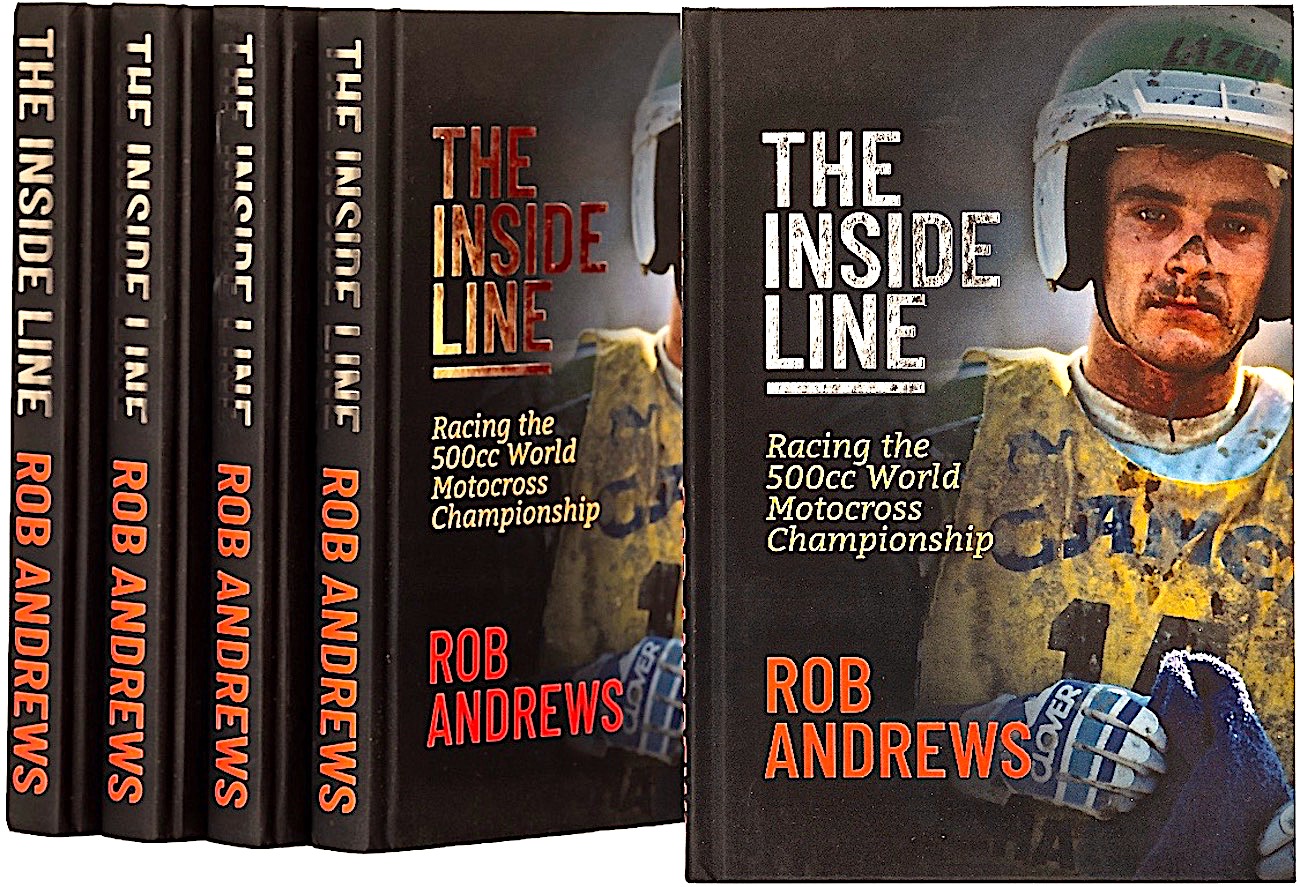 Rob Andrews’ eagerly awaited new book, “The Inside Line: Racing the 500cc World Motocross Championship” is now available at www.theinsidelinebook.com.
Rob Andrews’ eagerly awaited new book, “The Inside Line: Racing the 500cc World Motocross Championship” is now available at www.theinsidelinebook.com.
The critically acclaimed book, “The Inside Line: Racing the 500cc World Motocross Championship” (Second Edition) is back on sale at www.insidelinebook.com. Tracing the journey of the British former 500 GP star, from unremarkable amateur through to factory Kawasaki rider, GP contender, and member of Great Britain’s 1985 Motocross des Nations team, “The Inside Line” is a unique, comprehensive, and fascinating first-hand account of what it was really like to race in the 500cc World Motocross Championship during the 1980s. It has over 400 photographs from the sport’s most acclaimed photographers. Available for world-wide shipping, the book can be ordered at www.theinsidelinebook.com
• MXA PRODUCT SPOTLIGHT: TWIN AIR ICE FLOW HIGH-PRESSURE RADIATOR CAP
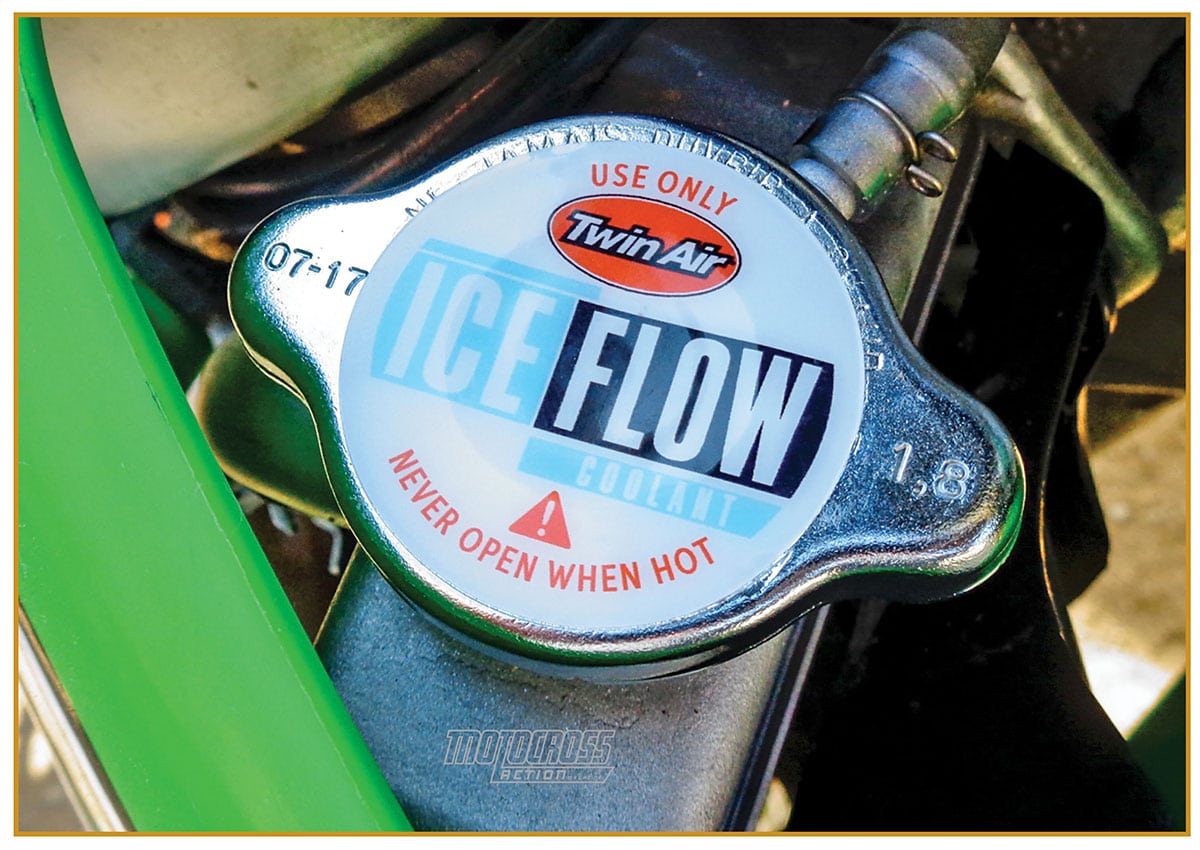
Twin Air’s Ice Flow radiator cap increases the boiling point of the water in your bike’s radiator by increasing the amount of pressure inside the radiator. Without any pressure on it, water will boil at 212 degrees Fahrenheit (at standard temperature and barometric pressure); however, a cooling system that is under 15 pounds of pressure will allow straight water to reach 250 degrees before it boils. For every pound of pressure exerted on the coolant, the static boiling point is raised by 3 degrees. Twin Air offers 1.8 radiator caps to replace the stock 1.1 caps on Hondas, Yamahas, Kawasakis and Suzukis. For KTMs and Husqvarnas, which come stock with 1.8 caps, they have a 2.0 cap. The retail price is $24.95. For more information on Twin Air products go to (800) 749-2890 or www.twinair.com.
• MXA’S 2025 COLLECTION OF IN-DEPTH 2025 VIDEO TESTS
• MXA VIDEO: MOTOCROSS ACTION’S 2025 450 SHOOTOUT
• MXA VIDEO: MOTOCROSS ACTION’S 2025 250 SHOOTOUT
• MXA VIDEO: 2025 TRIUMPH TF450-RC FIRST RIDE
• MXA VIDEO: 2025 YAMAHA YZ250FX FIRST RIDE
• MXA VIDEO: WE RIDE COTY SCHOCK’S PERSONAL YAMAHA YZ125
• MXA VIDEO: 2025 KAWASAKI KX250 FIRST RIDE
• MXA VIDEO: 2025 HONDA CR450 FIRST RIDE
• MXA VIDEO: WE RIDE DR.D’s PURPOSE-BUILT YAMAHA YZ85
• MXA VIDEO: 2025 HONDA CRF250 WORKS EDITION FIRST RIDE
• MXA VIDEO: 2025 YAMAHA YZ450 FIRST RIDE
• MXA VIDEO: 2025 YAMAHA YZ250F FIRST RIDE
• MXA VIDEO: 2025 YAMAHA YZ250FX CROSS-COUNTRY FIRST RIDE
• MXA VIDEO: 2025 KTM 150SX TWO-STROKE FIRST RIDE
• MXA VIDEO: 2025 KAWASAKI KX450 FIRST RIDE
• MXA VIDEO: 2025 KTM 450SXF FIRST RIDE
• MXA VIDEO: THE FASTEST KTM 350SXF VS A 2025 KTM 450SXF
• MXA VIDEO: 2025 KTM 250SXF FIRST RIDE
• MXA VIDEO: WE RIDE THE 125 THAT 508,000 VIEWERS CAN’T BUY IN THE USA
• MXA VIDEO: WE RIDE PHIL NICOLETTI’S FINAL CLUBMX YZ250F
• THE GREATEST DEAL IN MOTOCROSS: REAL WORDS, LARGE PHOTOS, MORE TECH & YOU GET A $25 ROCKY MOUNTAIN CREDIT
 This is the cover of the December 2024 issue of MXA. It features a detailed 2025 MXA 450 Shootout, an indepth interviews with Pro Circuit’s Mitch Payton, coverage of Team USA at the FIM Junior World Championships for 65cc, 85cc and 125cc machines of the 2025 KTM 250SXFa full test of the the 2025 Yamaha YZ450F and an actual up-to-date test of the 2025 Suzuki RM-Z450. We even went back in time a decade to test Jason Anderson’s 2015 factory Husqvarna FC450 and even farther back to take a close-up look at Marty Smith’s 1976 Honda RC125M.
This is the cover of the December 2024 issue of MXA. It features a detailed 2025 MXA 450 Shootout, an indepth interviews with Pro Circuit’s Mitch Payton, coverage of Team USA at the FIM Junior World Championships for 65cc, 85cc and 125cc machines of the 2025 KTM 250SXFa full test of the the 2025 Yamaha YZ450F and an actual up-to-date test of the 2025 Suzuki RM-Z450. We even went back in time a decade to test Jason Anderson’s 2015 factory Husqvarna FC450 and even farther back to take a close-up look at Marty Smith’s 1976 Honda RC125M.
Did you know that it couldn’t be easier or cheaper to subscribe to MXA than it is right now—because when you subscribe you receive a Rocky Mountain ATV/MC credit for $25 towards anything in their massive inventory, all at no cost to you. Are you smart enough to recognize a great deal when you see it? To subscribe call (800) 767-0345 or Click Here
• THE ALL-NEW DUNLOP “FACTORY SPEC” TIRES
MXA’s Josh Mosiman and Trevor Nelson flew out to Huntsville, Alabama, to visit the Dunlop test facility and compare the ‘factory spec’ tires, to the production MX34 tires. Josh rode the 2025 Husky FC450 with both sets of tires back-to-back to figure out the difference on the track, plus he talked to Chris Siebenhaar, Brian Fleck, and Ryan Dungey about the new rubber.
• 2025 AMA NATIONAL MOTOCROSS CHAMPIONSHIP RACE SCHEDULE
2025 AMA NATIONAL MOTOCROSS CHAMPIONSHIP SCHEDULE
May 24…Pala, CA
May 31…Hangtown, CA
June 7…Thunder Valley, CO
June 14…Mount Morris, PA
June 28…Southwick, MA
July 5…Red Bud, MI
July 12…Millville, MN
July 19…Washougal, WA
Aug. 9…Crawfordsville, IN
August 16…Unadilla, NY
August 23…Budds Creek, MD
• FINAL 2024 TT SCRAMBLES RACE OF THE YEAR AT GLEN HELEN ON DEC. 15
 For more information go to www.OSSRG.org
For more information go to www.OSSRG.org
• START MAKING TRAVEL PLANS NOW! THE 2025 SEASON STARTS IN 29 DAYS
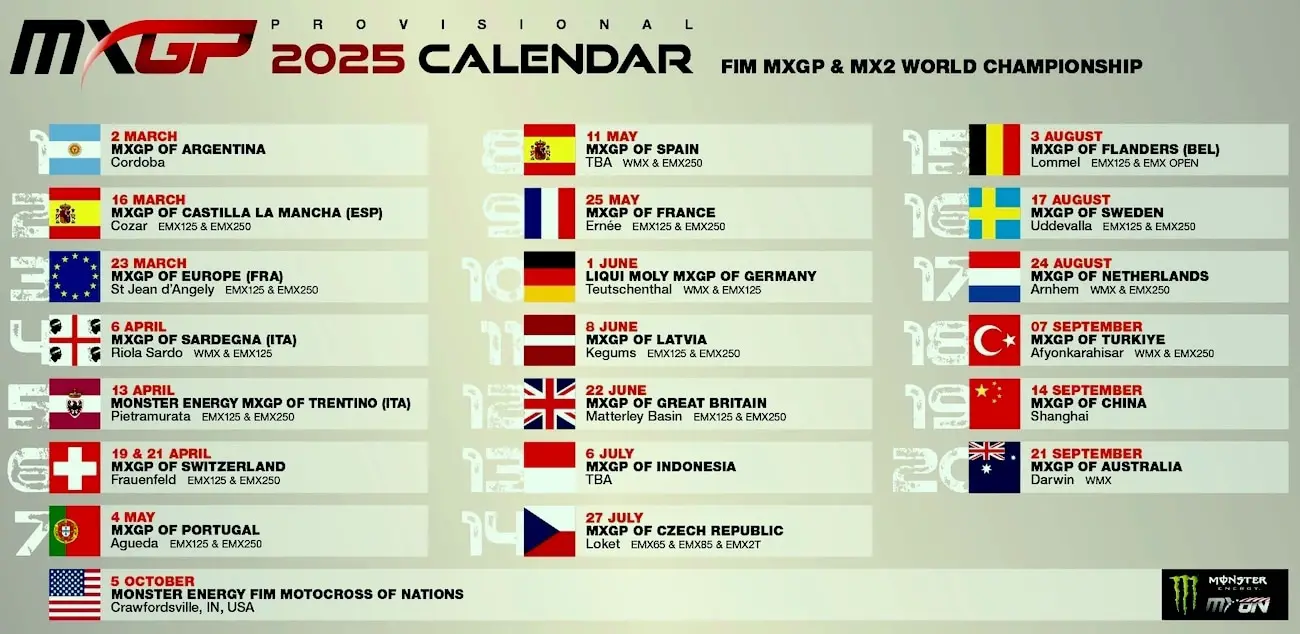 The 2025 MXGP season schedule was change this past week. Guess what? It will change a couple times more before the season start on march March 2, 2025.
The 2025 MXGP season schedule was change this past week. Guess what? It will change a couple times more before the season start on march March 2, 2025.
2025 AMA SUPERCROSS CHAMPIONSHIP
Jan. 11…Anaheim, CA
Jan. 18…San Diego, CA
Jan. 25…Anaheim, CA
Feb. 1…Glendale, AZ
Feb. 8…Tampa, FL
Feb. 15…Detroit, MI
Feb. 22…Arlington, TX
Mar. 1…Daytona Beach, FL
Mar. 8…Indianapolis, IN
Mar. 22…Birmingham, AL
Mar. 29…Seattle, WA
Apr. 5…Foxborough, MA
Apr. 12…Philadelphia, PA
Apr. 19…East Rutherford, NJ
Apr. 26…Pittsburgh, PA
May 3…Denver, CO
May 10…Salt Lake City, UT
2025 AMA NATIONAL MOTOCROSS CHAMPIONSHIP
May 24…Pala, CA
May 31…Hangtown, CA
June 7…Thunder Valley, CO
June 14…Mount Morris, PA
June 28…Southwick, MA
July 5…Red Bud, MI
July 12…Millville, MN
July 19…Washougal, WA
Aug. 9…Crawfordsville, IN
August 16…Unadilla, NY
August 23…Budds Creek, MD
2025 AMA ARENACROSS CHAMPIONSHIP
Nov. 15…Reno, NV
Nov. 16…Reno, NV
Dec. 6…Boise, ID
Dec. 7…Boise, ID
Jan. 3…Loveland, CO
Jan. 4…Loveland, CO
Jan. 24…Guthrie, OK
Jan. 31…Reno, NV
Feb. 1…Reno, NV
Feb. 7…Prescott, AZ
Feb. 8…Prescott, AZ
Feb. 28…Daytona, FL
2025 FIM WORLD MOTOCROSS CHAMPIONSHIP
Mar. 2…Argentina
Mar. 16…Spain #1
Mar. 23…France #1
Apr. 6…Sardinia
Apr. 13…Italy
Apr. 21…Switzerland
May 4…TBA
May 11…Spain #2
May 25…France #2
Jun. 1…Germany
Jun. 8..Latvia
Jun. 29…Indonesia #1
Jul. 6….Indonesia #2
Jul. 27…Czech Republic
Aug. 3…Belgium
Aug. 17…Sweden
Aug 24…Holland
Sept. 7…Turkey
Sept. 14…China
Sept. 21….Australia
2025 MOTOCROSS DES NATION
Oct. 5…Crawfordsville, Indiana
2025 BRITISH ARENACROSS TOUR
Jan.4 …Birmingham, UK
Jan.18…London, UK
Jan. 31…Belfast, NIR
Feb.1…Belfast, NIR
Feb. 8…Aberdeen, SCT
Feb. 22…Manchester, UK
April TBA…Middle East
April 26…Abu Dhabi, UAE
2025 AMA NATIONAL AMATEUR CHAMPIONSHIP
Jul. 28-Aug.2…Loretta Lynn, TN
2025 WORLD VET MOTOCROSS CHAMPIONSHIP
Oct. 31—Nov. 1-2…Glen Helen, CA
• MXA YOUTUBE CHANNEL | HIT THAT SUBSCRIBE BUTTON

The MXA wrecking crew is everything moto related. Check out our MXA YouTube channel for bike reviews, Supercross coverage, rider interviews and much more. And don’t forget to hit that subscribe button.
• TALK MOTO WITH ON MXA’S FACEBOOK GROUP CHAT
Photos Credits: Trevor Nelson, Debbi Tamietti, GasGas, Beta, Honda, Brian Converse, Kawasaki and MXA archives



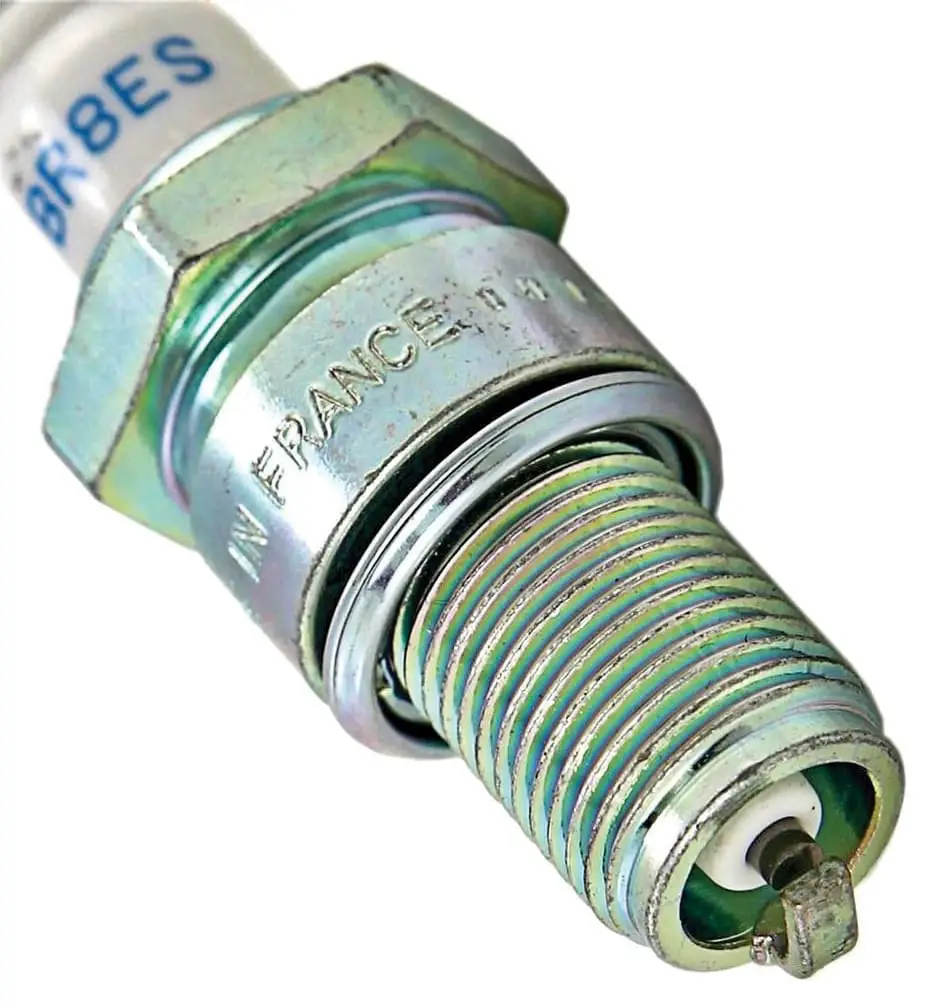
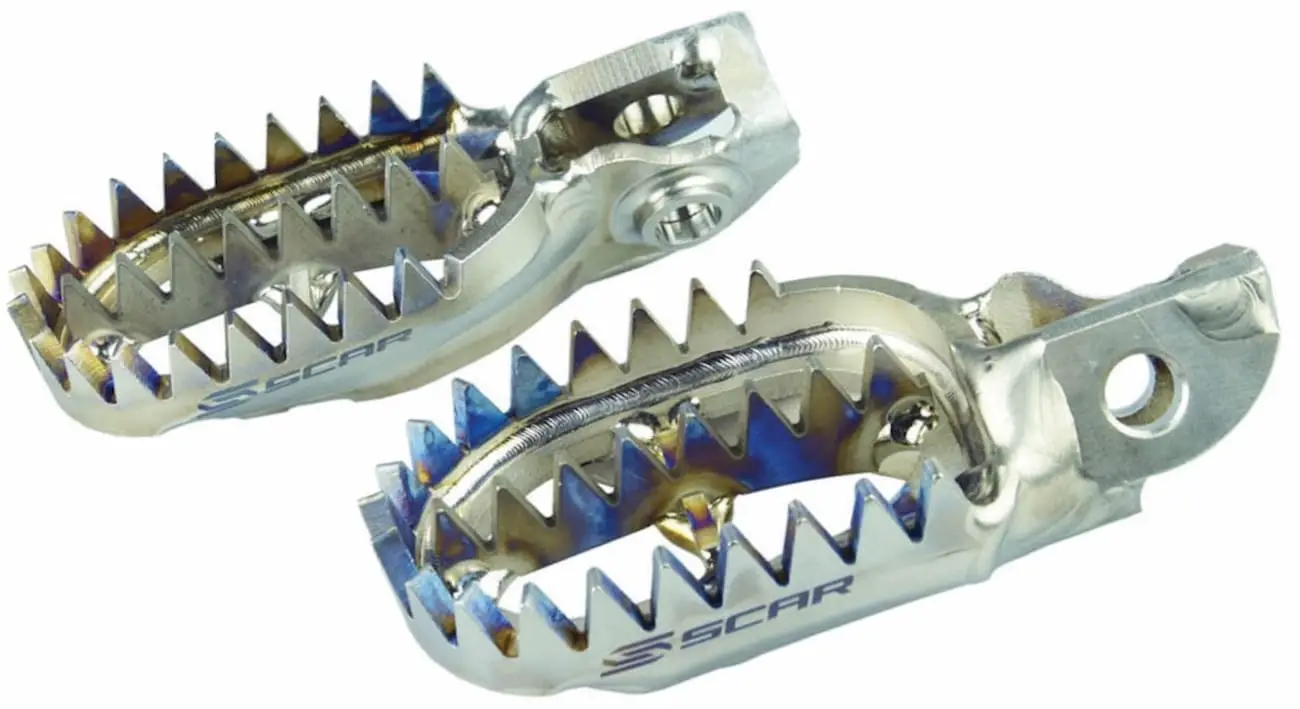
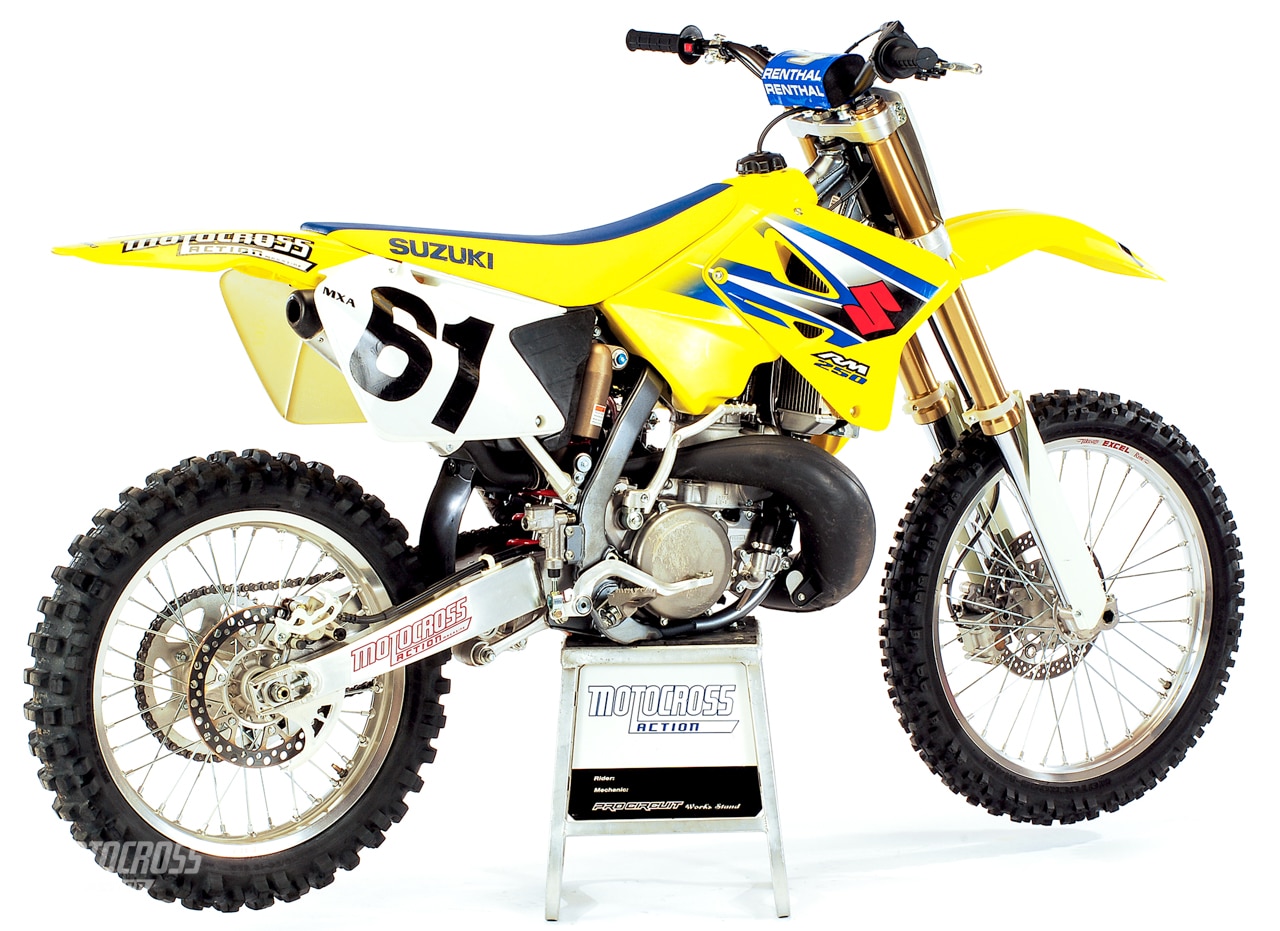
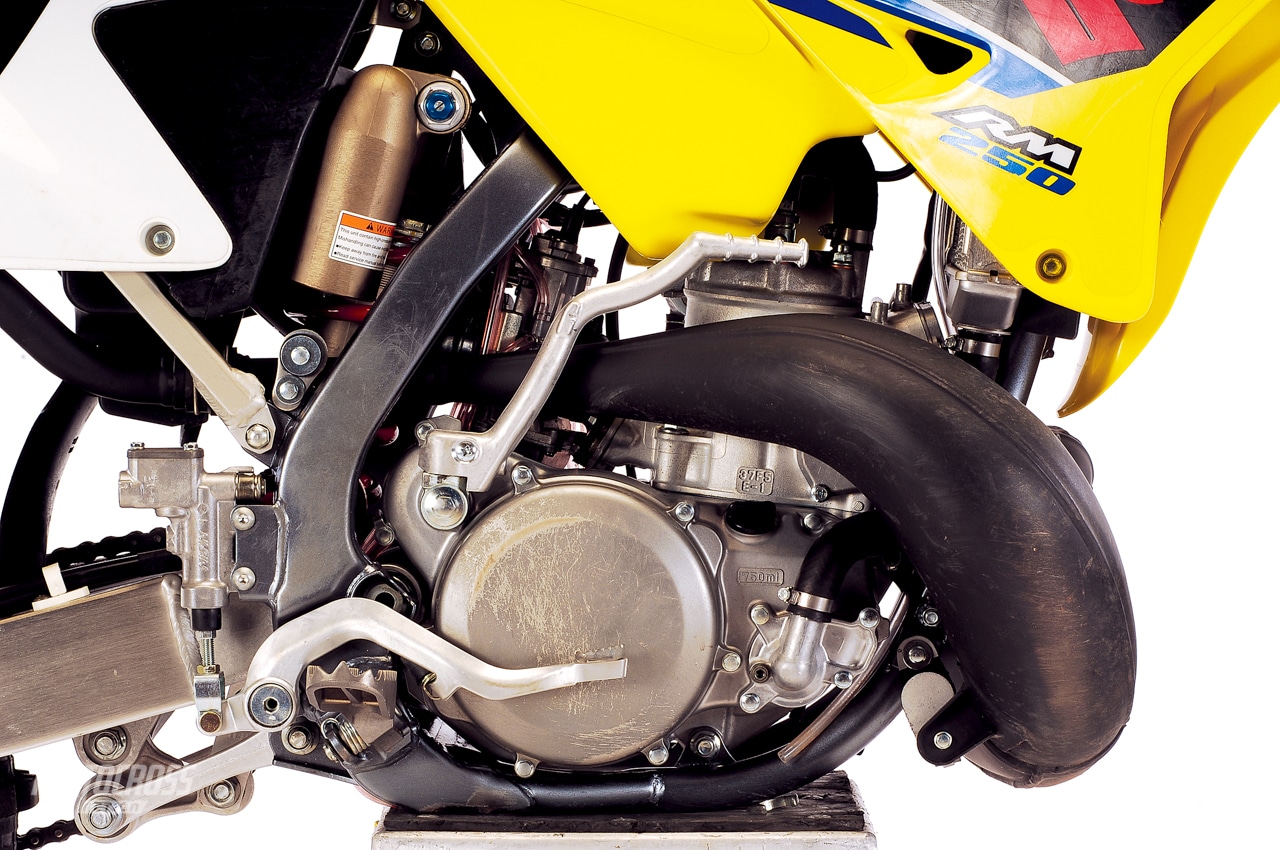
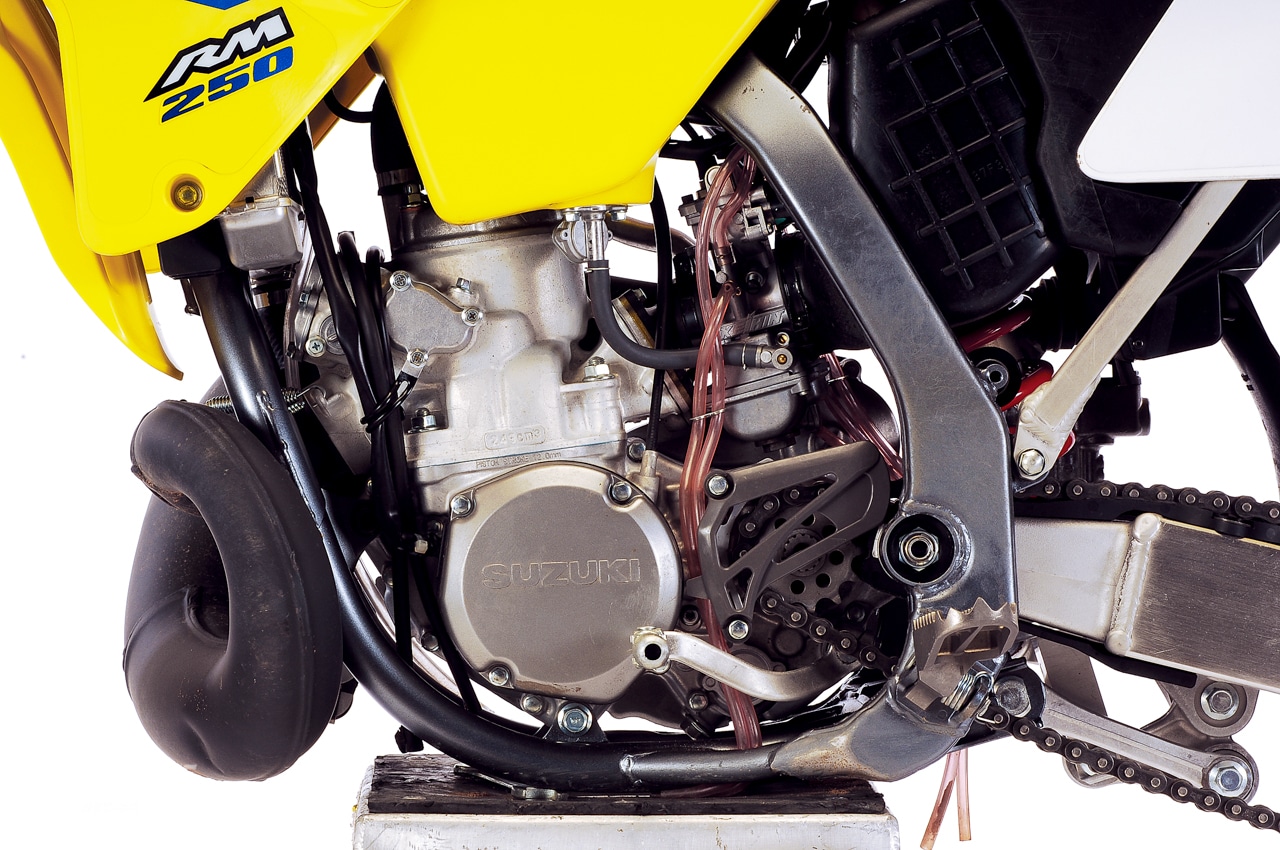
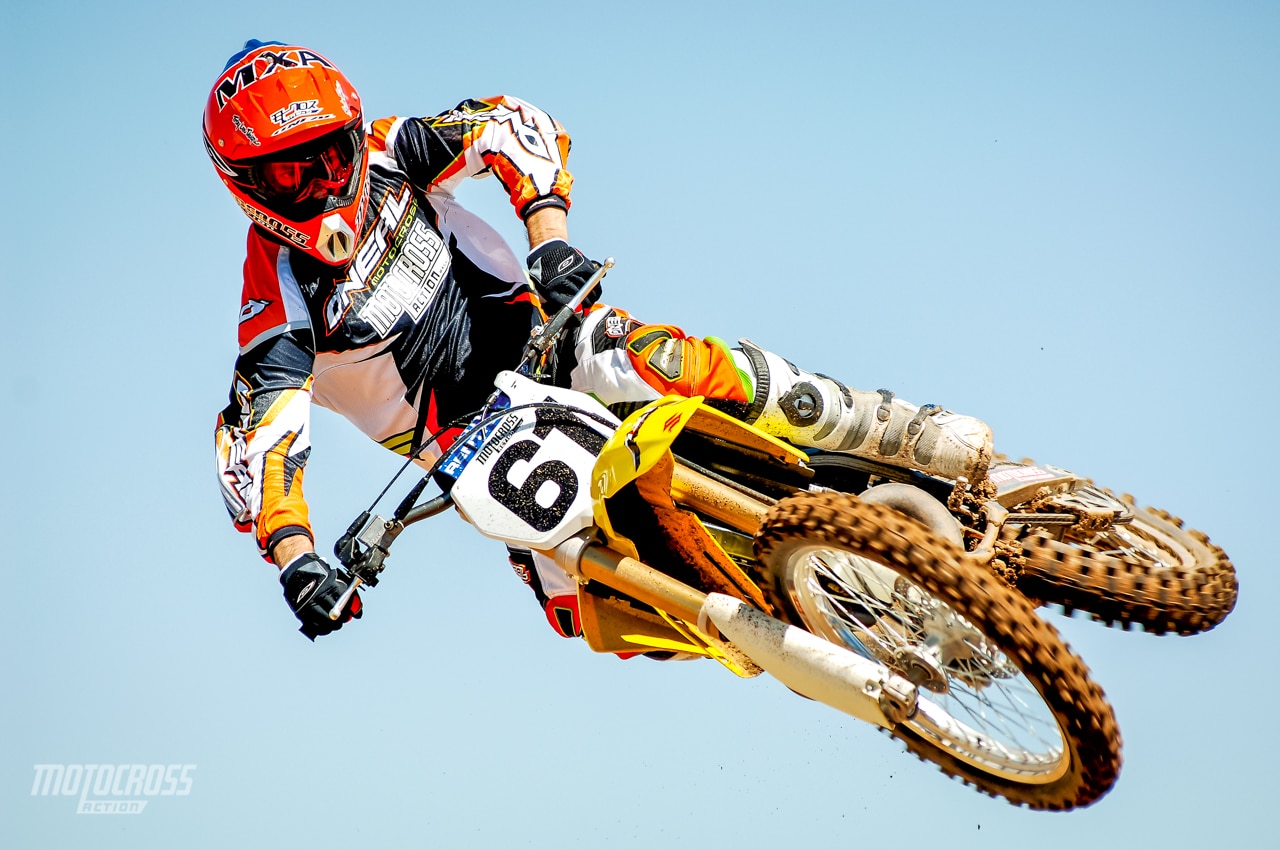
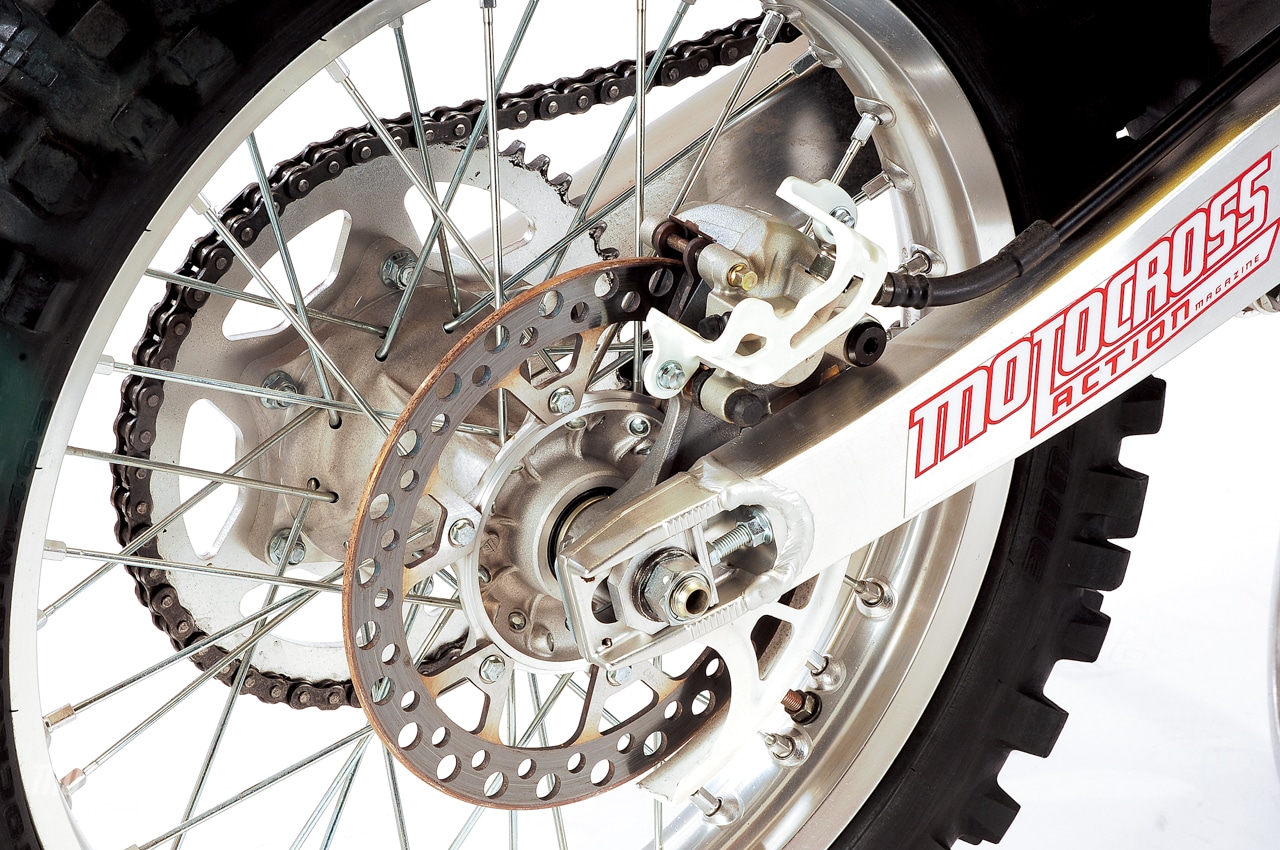
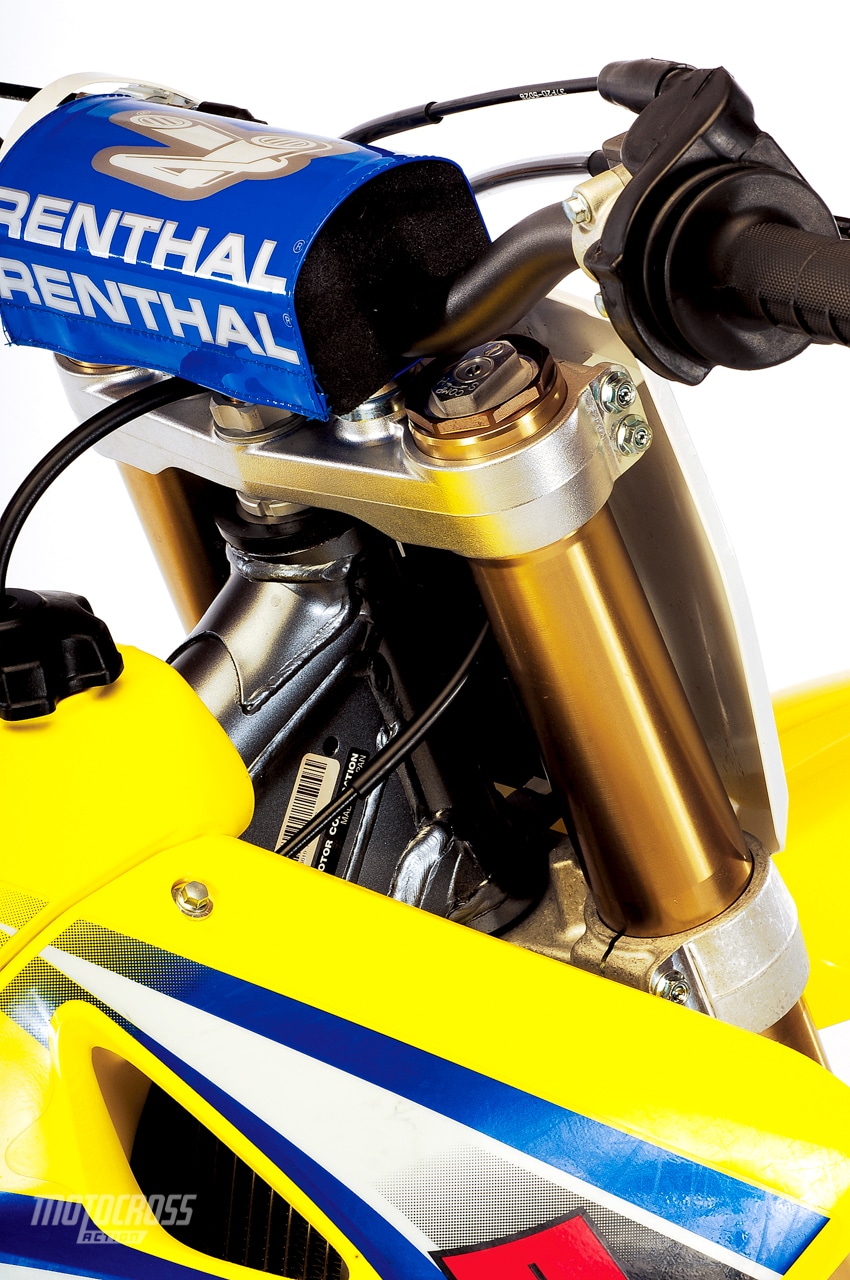
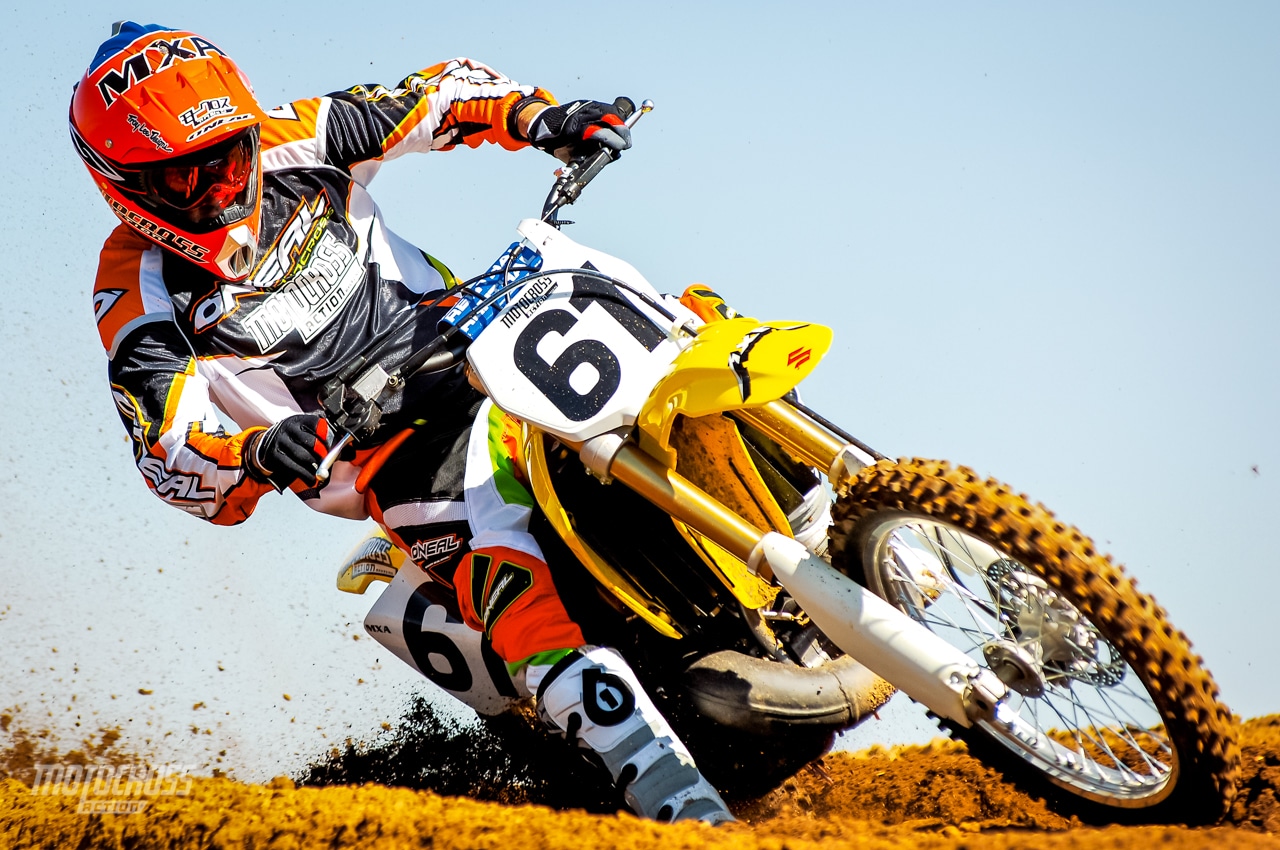
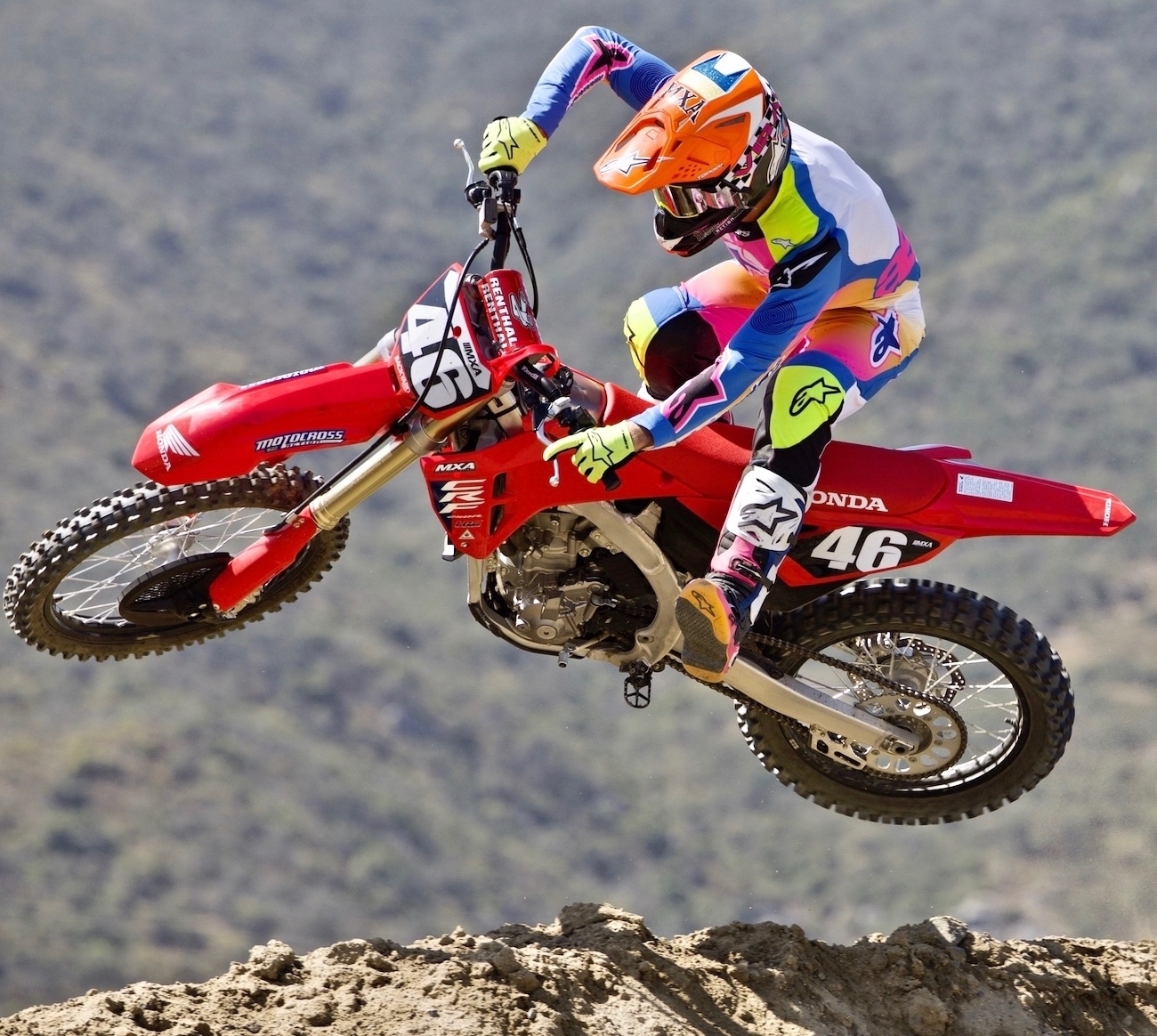
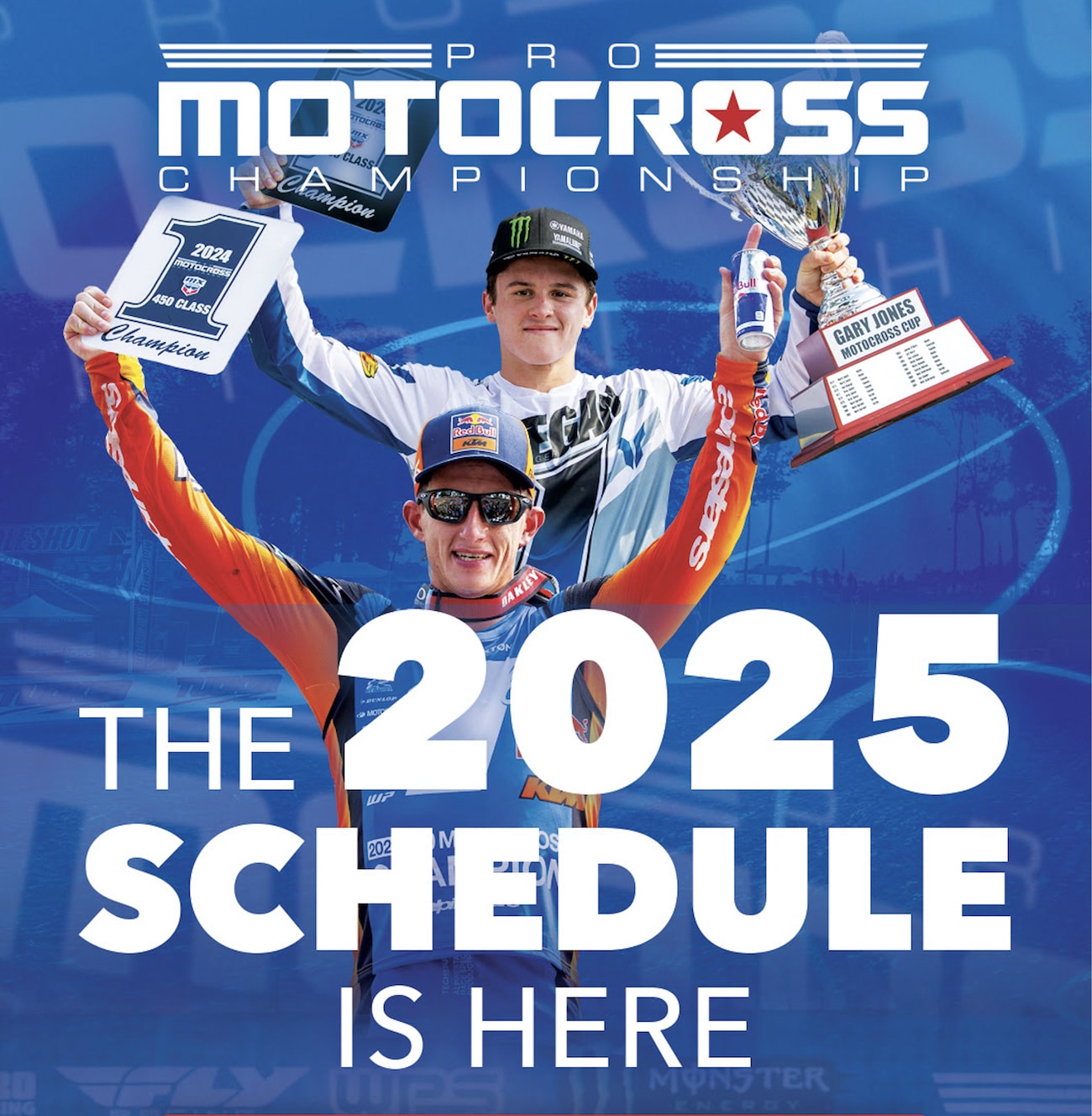




Comments are closed.